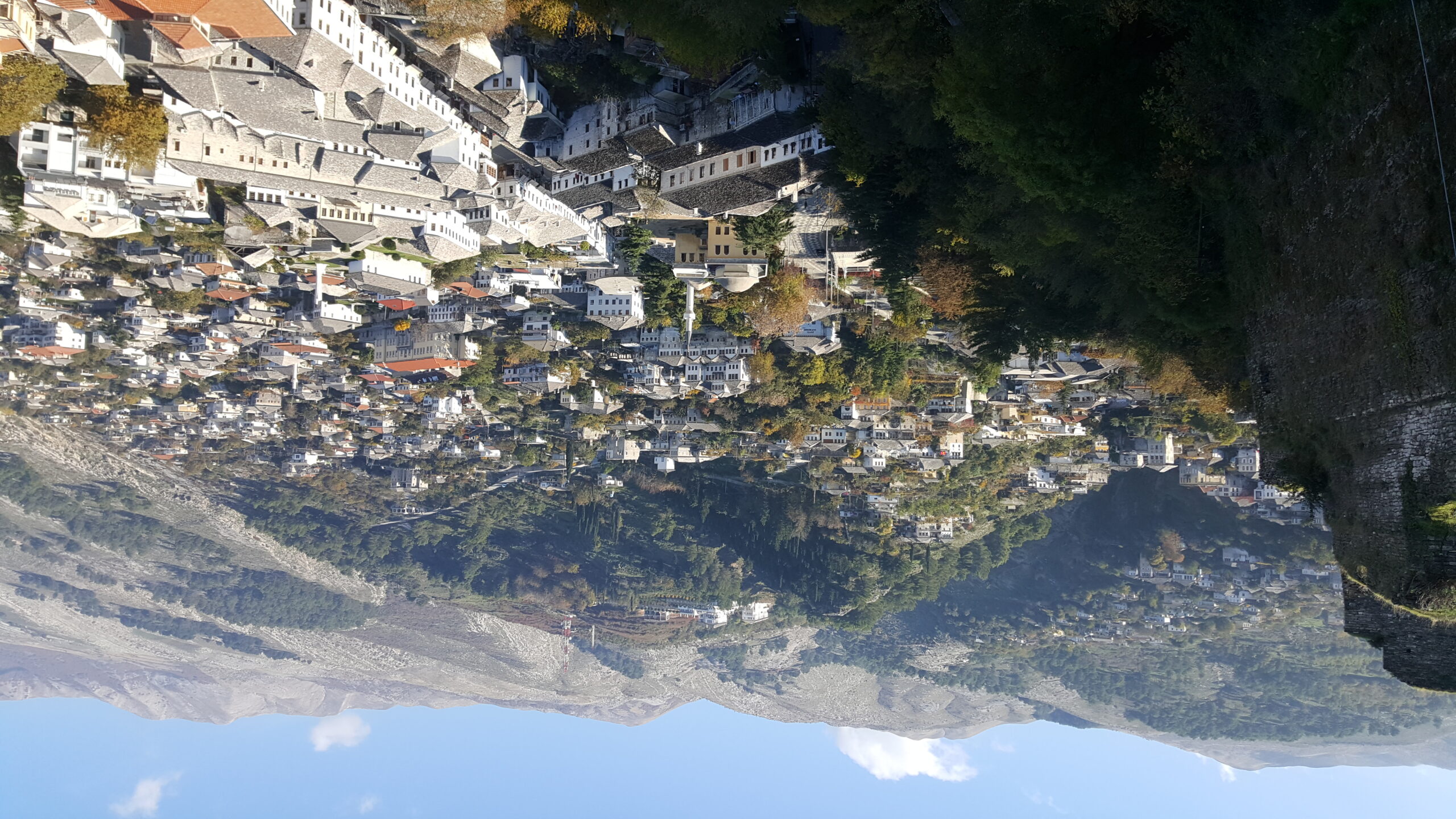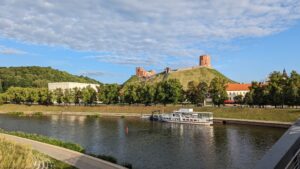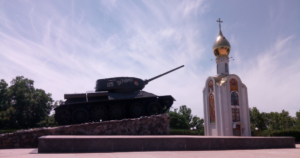We had a great time in the capital of Albania in 2018 and every traveler was telling us that the rest of the country was even more beautiful. Since it’s one of the most affordable and least touristy countries in Europe, we decided to check it out last fall… and it’s really great.
We simply loved this roadtrip. Albania is certainly one of the best-kept secrets in Europe (secret in part because the country was a socialist dictatorship completely closed off to the rest of the world until not so long ago).
It’s also cheaper than most other destinations on the old continent… and just as beautiful.
A rich history and culture with Roman, Ottoman, Greek, Venetian, and other influences. But also sublime landscapes, with many castles, mountains, and beaches… a nice variety for a country twice as small as Nova Scotia.
Along with the other Flytrippers co-founder, Kevin, in November 2020, we chose to include Albania on our 2nd international pandemic trip (the first one in the summer of 2020, to neighboring Greece and Turkey, had gone so well).
We opted for a car rental to explore the entire length of the small country.
Car rentals are not that expensive in many countries when you avoid the scam of paying for insurance (because the best credit cards cover you for the damage portion for free), especially when you split the cost with a travel buddy (or a few travel buddies).
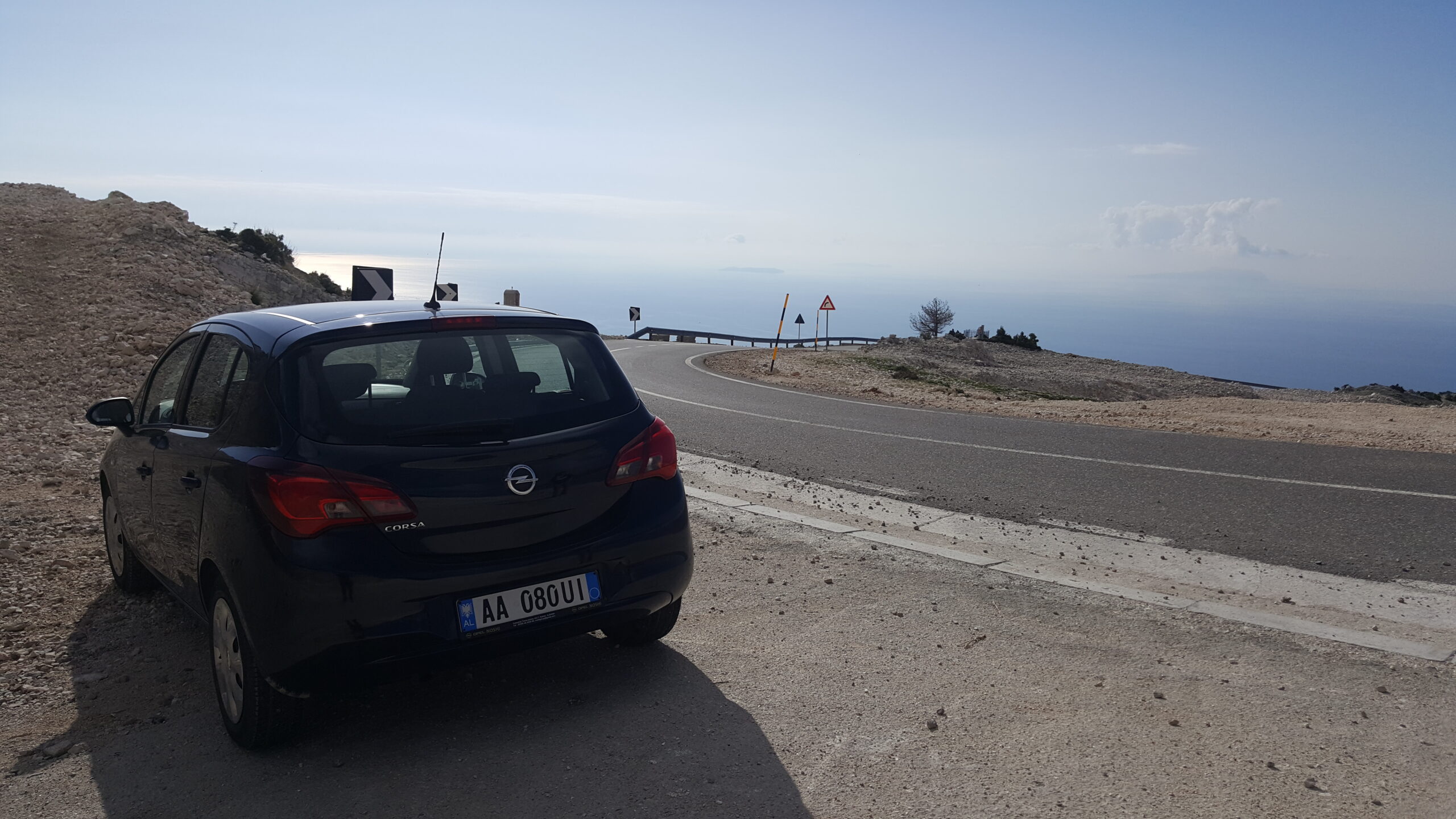
A detailed article with logistics and tips for traveling in Albania will follow if you’re interested; right now we’ll just look at the destinations.
But I will at least mention that getting to Albania is extremely affordable from just about anywhere in Europe (and there are absolutely no restrictions or requirements at all to enter the country and it has been this way for a while).
For example, if you take advantage of one of the frequent deals we spot to Spain for $450 roundtrip on our Flytrippers deals page, you could add a Spain-Albania flight for often as little as $50 roundtrip.
That’s because the country is quite well served by European ultra low-cost carriers. We’ll talk about this trick for Europe soon.
Of course, if you win our Flytrippers $1,000 flight giveaway, you can go there pretty easily.
Double-check during the pandemic, but normally you can also enter by land through Greece, Northern Macedonia, Kosovo, or Montenegro…

You can even go there on a long ferry from Italy (Albania is the part of the Balkans that is closest to Italy) or on a very short ferry from a Greek island that I will show you below.
I’ll talk about the budget in the future post, but it’s really among the most affordable countries in Europe in terms of cost of living.
And if you really want to travel for less (and therefore be able to travel more), you have to prioritize traveling for less. Pretty simple concept really, isn’t it?
Roadtrip itinerary in Albania and 14 stops
So here is an overview of our routing and then the 14 stops on our Albania roadtrip itinerary.
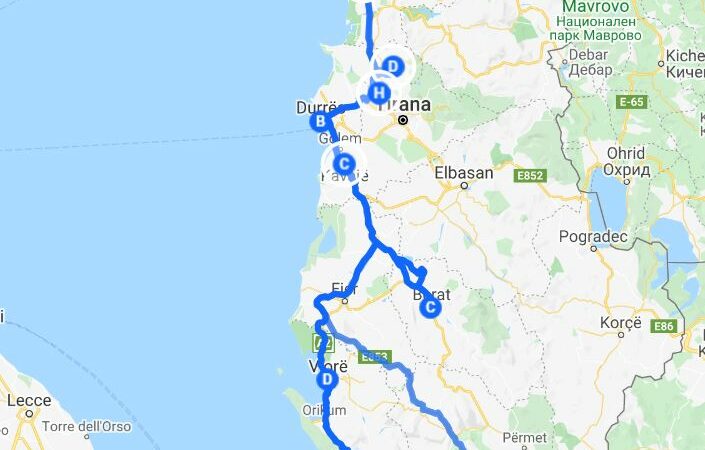
1. Tirana
Fun fact: Until April 2021, the country had only one airport, so this is where you would arrive if you were flying in.
This is the Nënë Tereza (Mother Teresa, the most famous Albanian) airport of Tirana (TIA), in the capital and most populated city of the country (about 500,000 inhabitants).
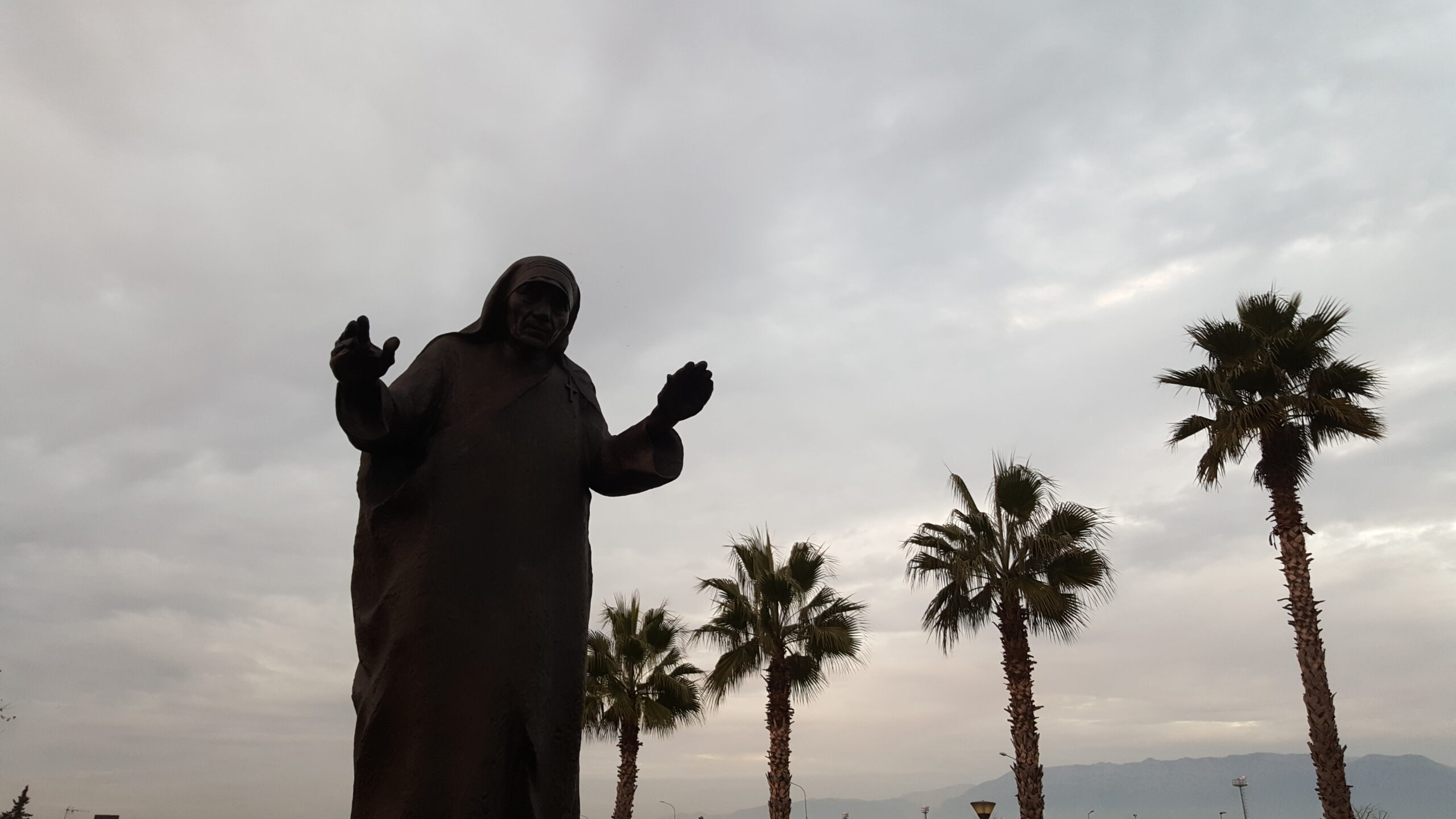
The airport operator had obtained a kind of exclusivity right for the whole country, which hindered the development of tourism.
This is because the main attractions are the coast on the Adriatic Sea, the south of the country (the Albanian Riviera), and the nature in the north (the Albanian Alps) and in the east… and Tirana airport is not on the coast and is in the center.
In a way, it was perhaps positive that there was just one: It left Albania to travelers who like to get off the beaten path. So maybe there is not much time left before it becomes a very touristy destination… (Go before that!)
It is one of the few countries in Europe that is safe from mass tourism and hordes of tourists. That alone is pretty great!
We had already spent time in Tirana in 2018 and it was a really cool city, but this time we skipped the city entirely and headed to the sea (I’ll do a separate post about the city).
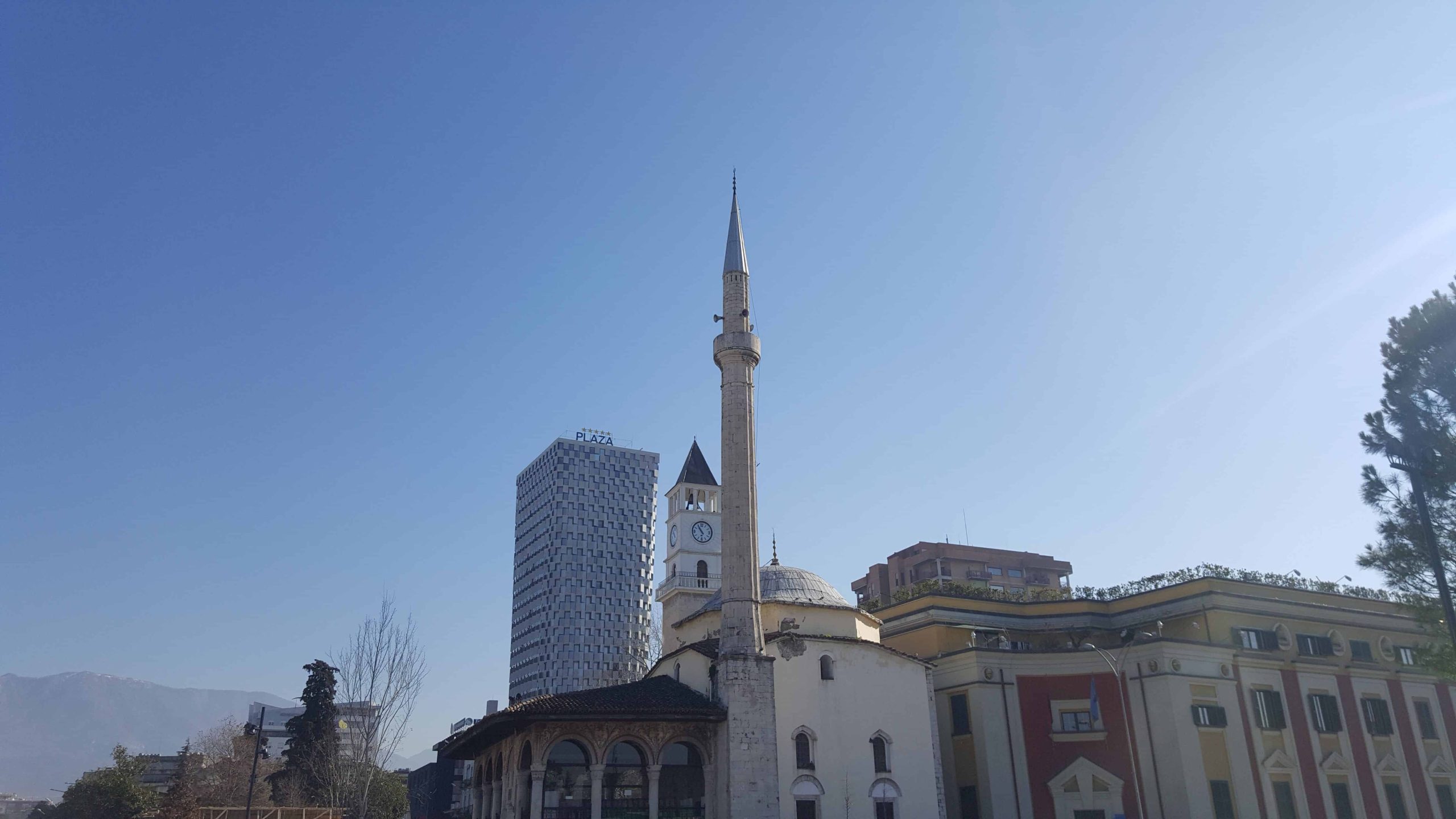
2. Durrës
Our first stop was the coastal town of Durrës, the 2nd most populous in the country.
The Roman amphitheater in the center of the city dates from the 2nd century.
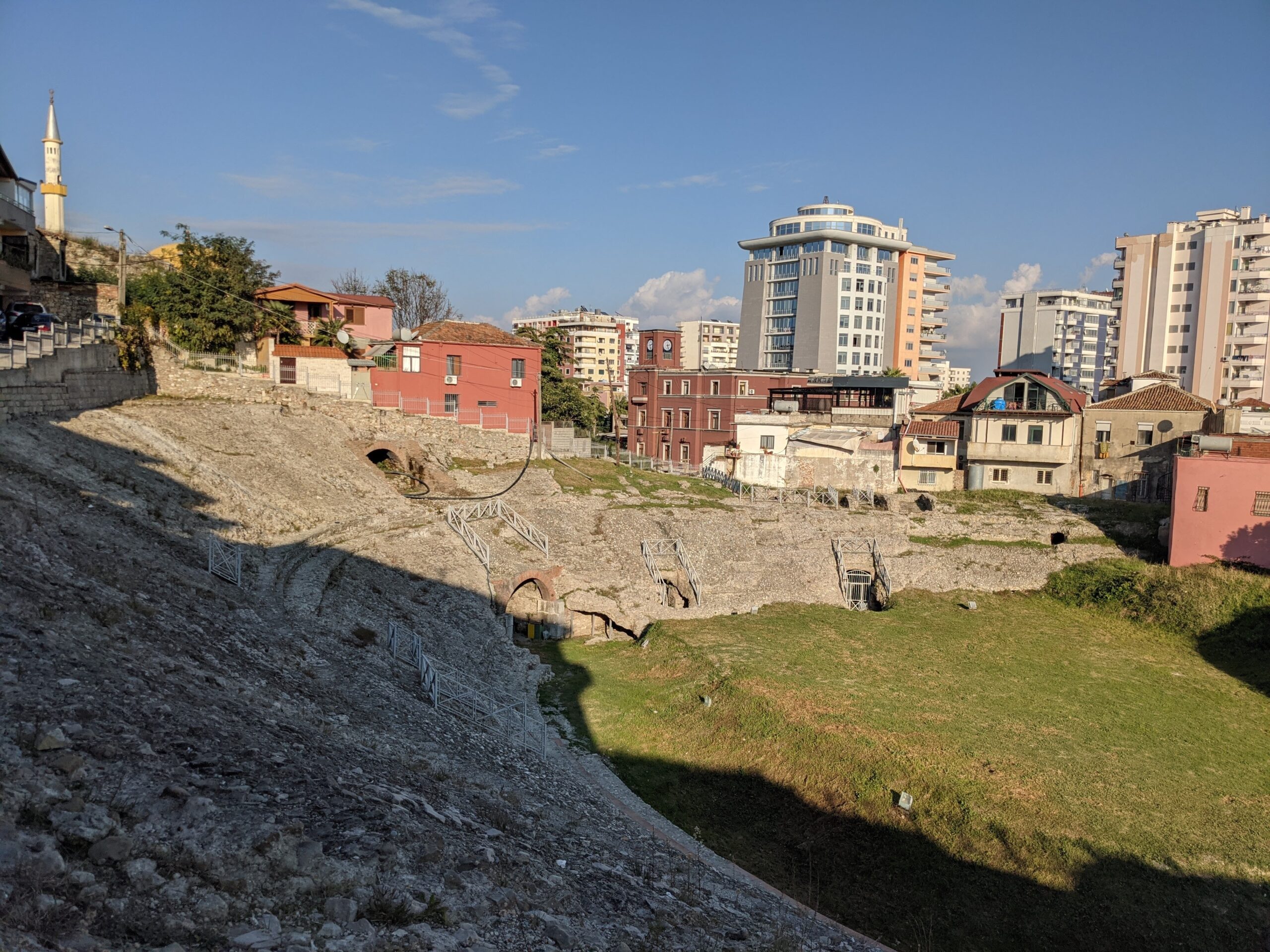
For those who don’t know Albania well, the mosque on the left (and in the picture of Tirana above) is because Albania is one of the only 3 countries with a Muslim majority in Europe (I’ll exclude Turkey since it is mostly in Asia).
But Albania is a secular country with no state religion and is often ranked among the least religious countries in the world. In fact, the former communist regime even proclaimed itself the first atheist country in the world!
Another interesting fact about Albania is that unlike all the official languages of Europe, which are all part of a sub-family of languages that share many similarities with each other (Romance languages, Germanic languages, Slavic languages, Uralic languages, etc.), the Albanian language is completely unique.
It bears no resemblance to any other language and despite some words with recognizable roots, the vast majority of words are truly distinct.
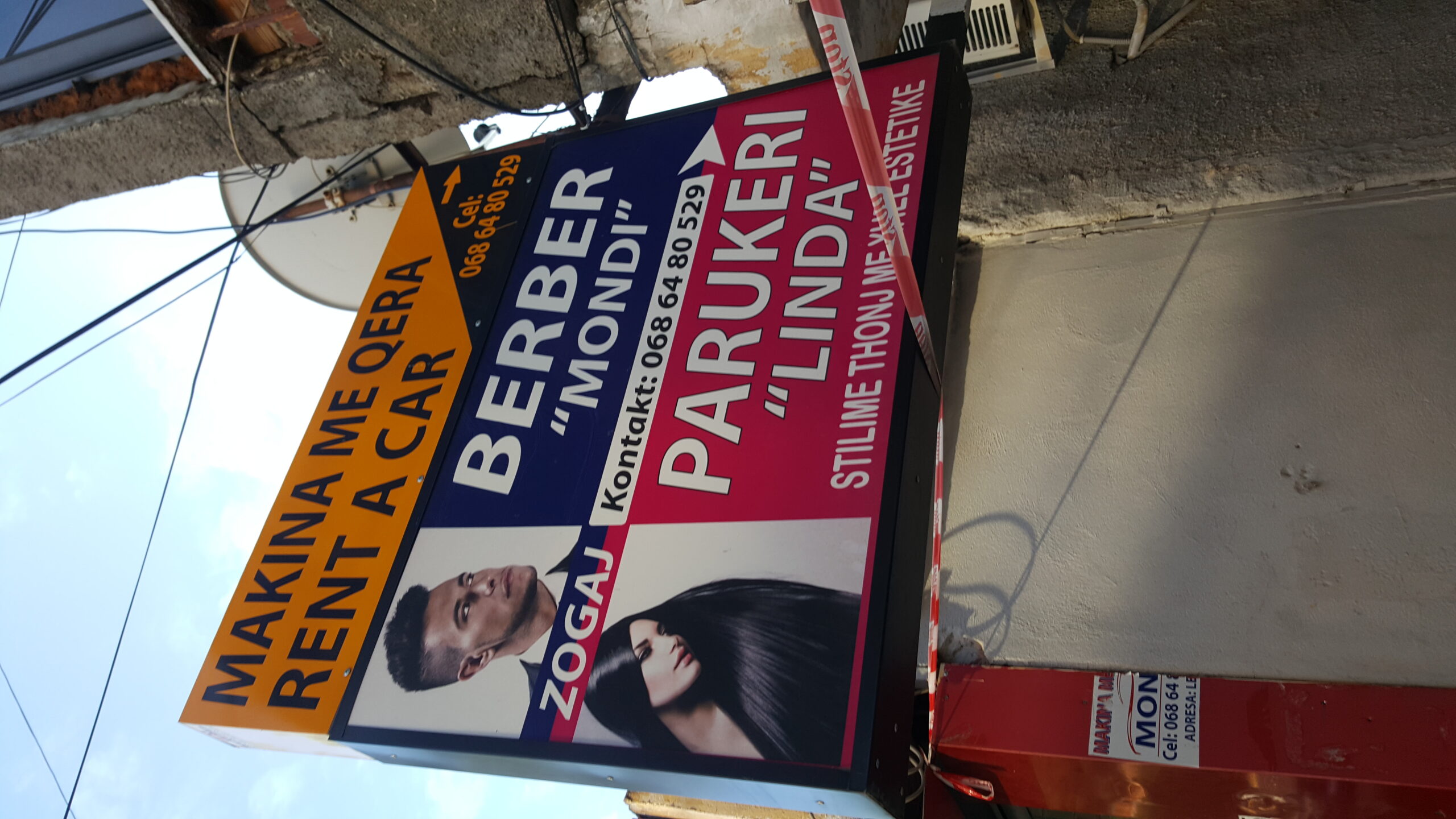
By the way, even though ethnically the majority of the Balkan Peninsula is Slavic, Albanians also have their own separate ethnicity.
Although I’m more of an urban type of traveler personally, for this trip the goal was really to enjoy the scenic beauty and the more historical towns, so we went through the town of Durrës very briefly.
3. Berat
The historical center of the city of Berat (in conjunction with Gjirokastër below; my favorite part of the trip) is a UNESCO World Heritage Site, because it is a mixture of different types of architecture that has survived over time.
It really is beautiful.
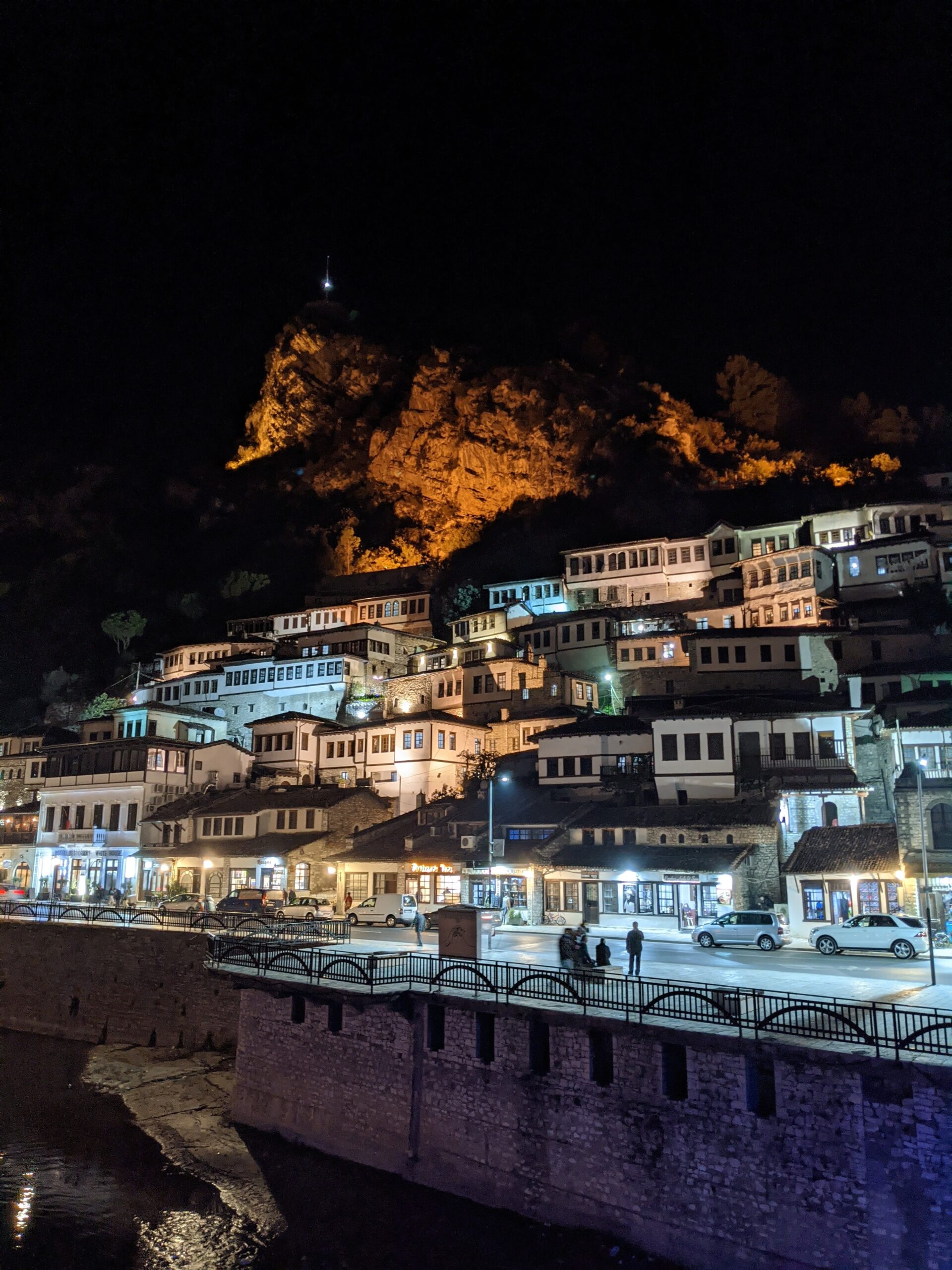
Berat is often called the city of 1,000 windows. The history of the city dates back almost 2,500 years ago.
The castle and citadel above the hill is a very interesting place to visit.
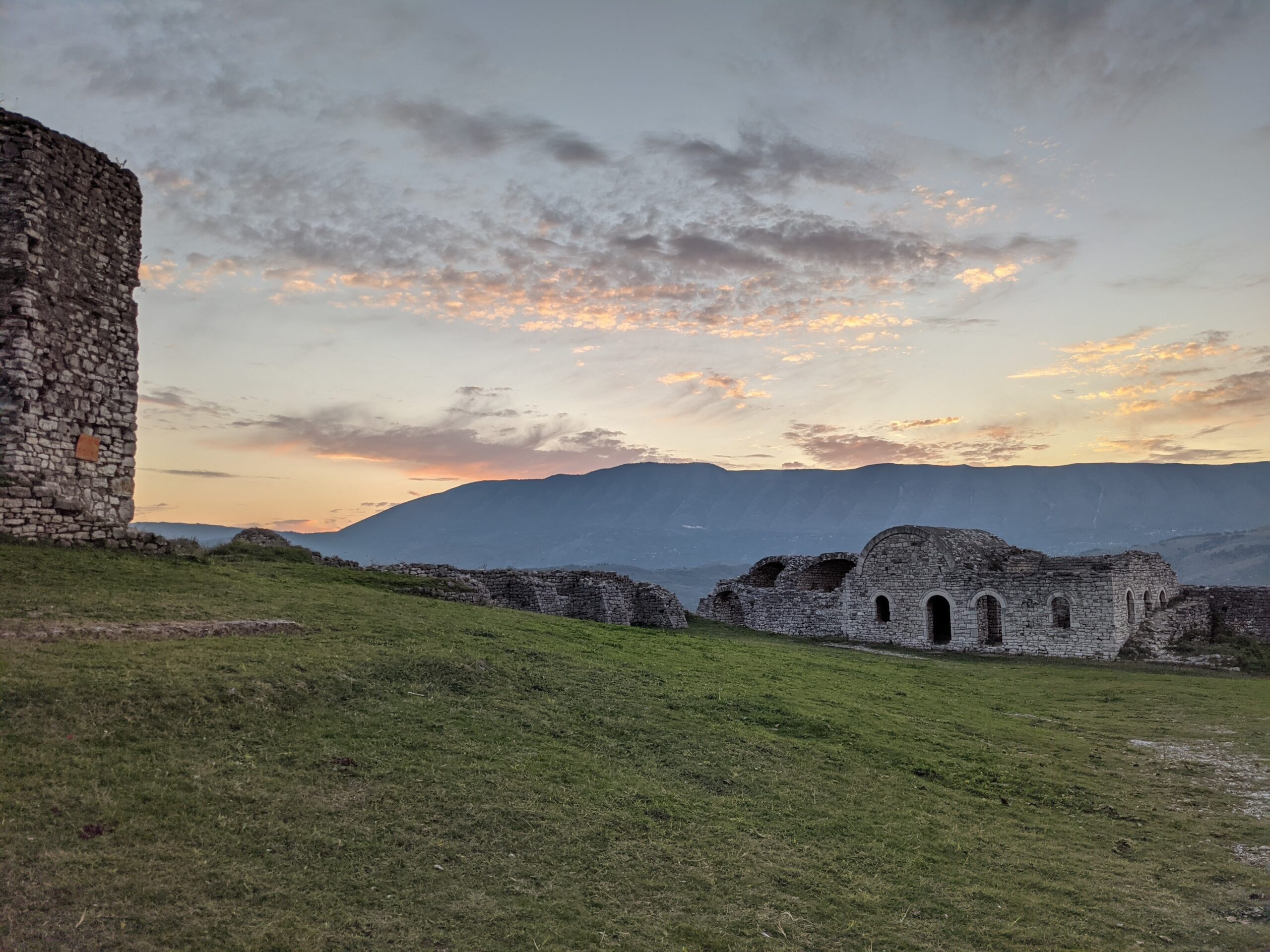
It’s actually an entire small town that sits inside the fortifications of the castle that overlooks the town, with a few churches from the time of the Byzantine Empire.
Definitely worth a stop.
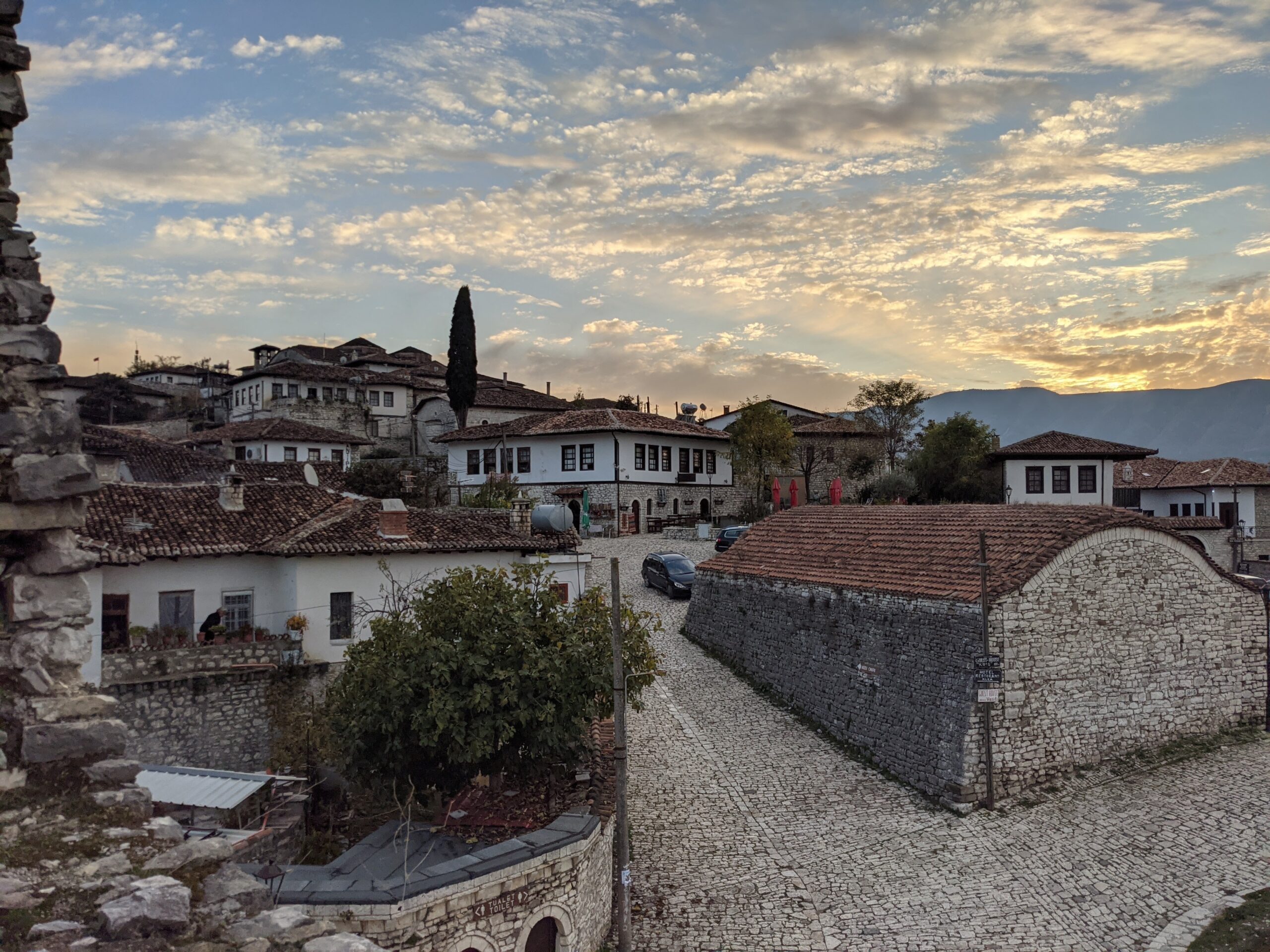
Personally, I could have walked for many more hours in this beautiful maze.

The whole place is surrounded by mountains and the view itself is worth a visit.
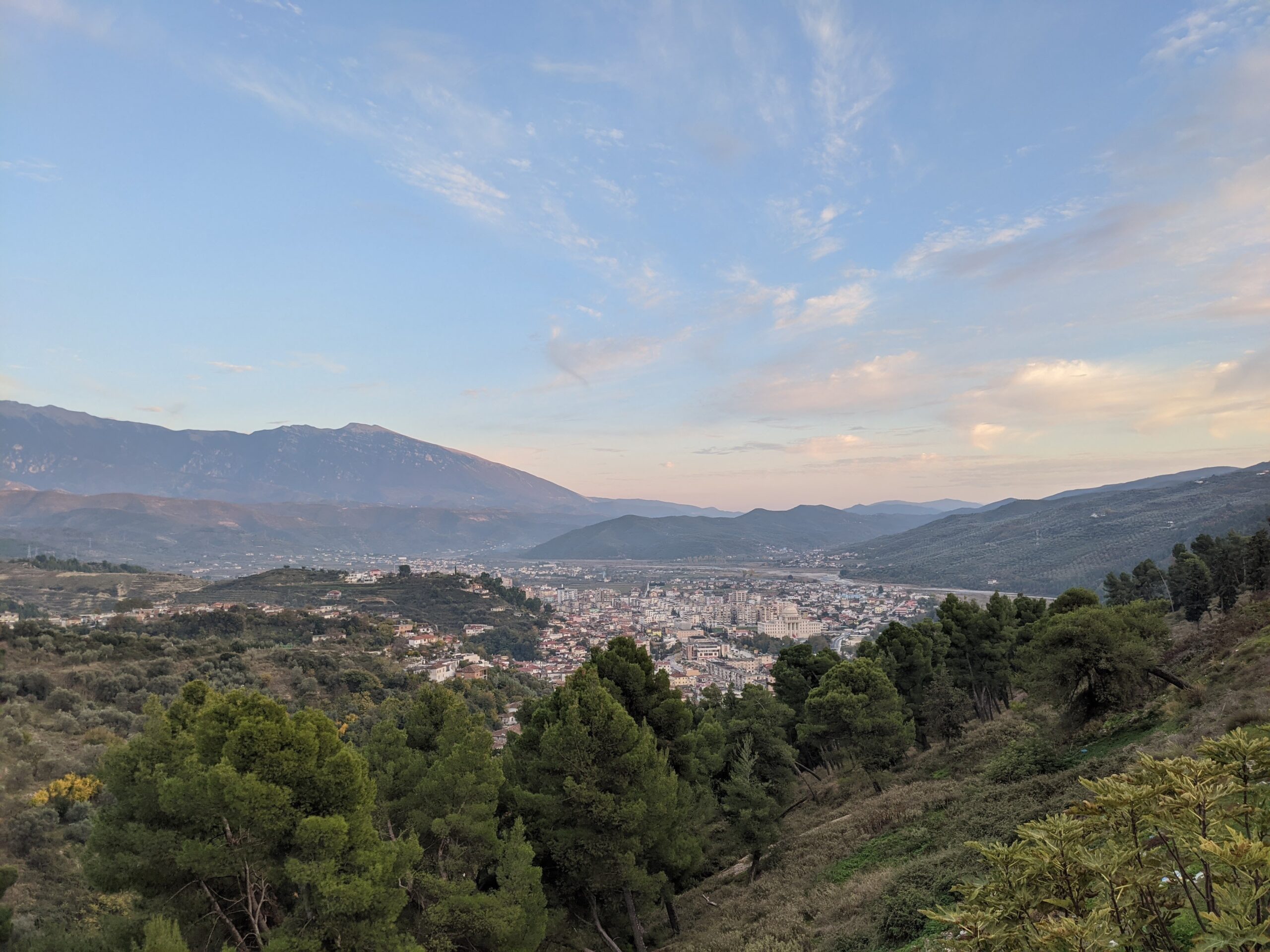
We were able to experience the xhiro, the Albanian tradition of going out on the pedestrian streets to socialize just before sunset.
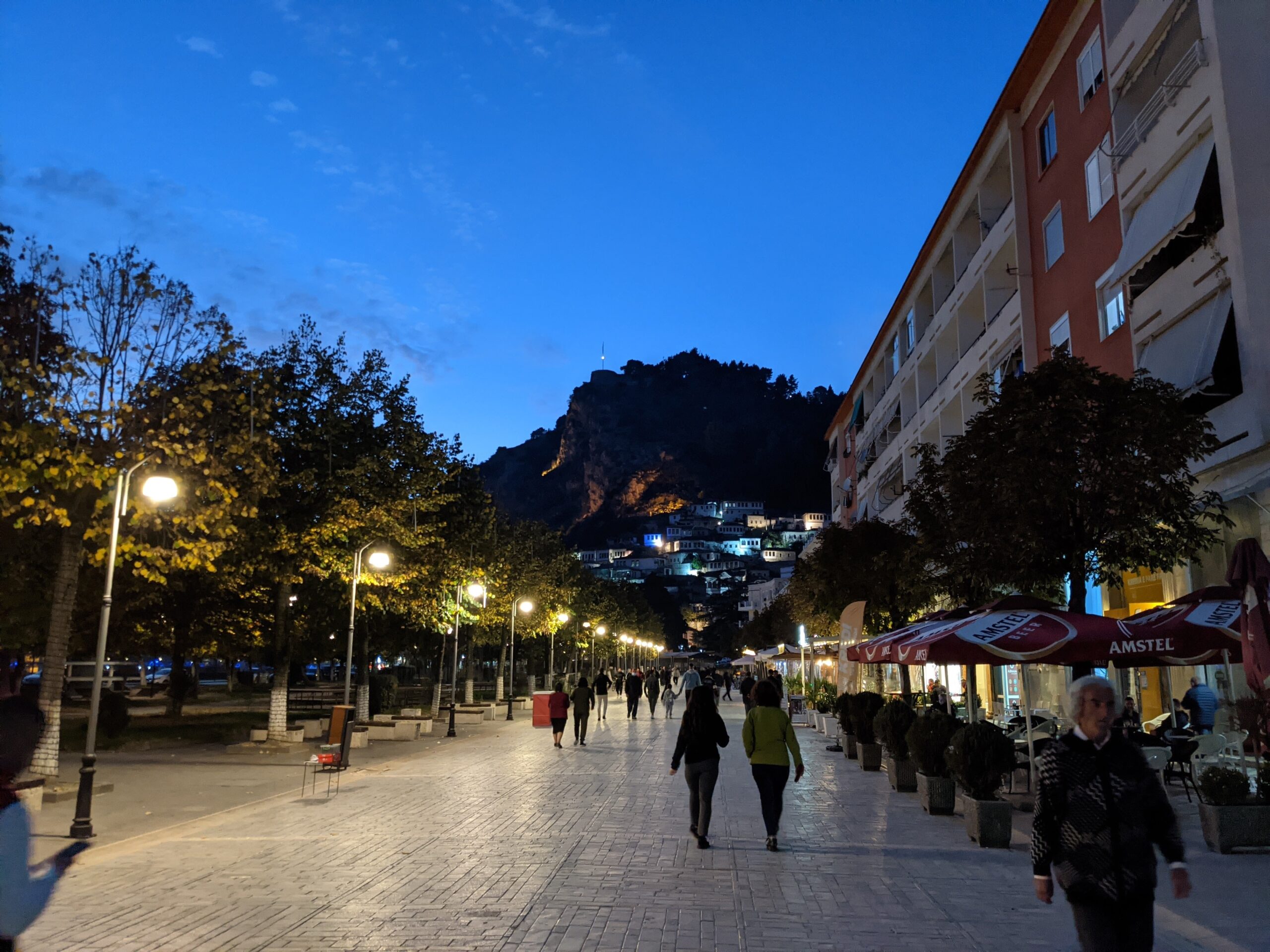
Many continue the socializing on one of the many terraces and “enhance” the experience with the famous raki, the alcohol of choice in this whole region. If you’ve ever been around there, you know how disgusting it is, but some people seem to like it!
4. Vlorë
The 3rd largest in the country (that’s relative for a country of less than 3 million; Vlorë has only 100,000 inhabitants, about the size of Sarnia, Ontario), Vlorë is on the coast and is going to become the entry point to the Albanian Riviera when its airport is built in the next 2 or 3 years.
It is likely to develop quite a bit.
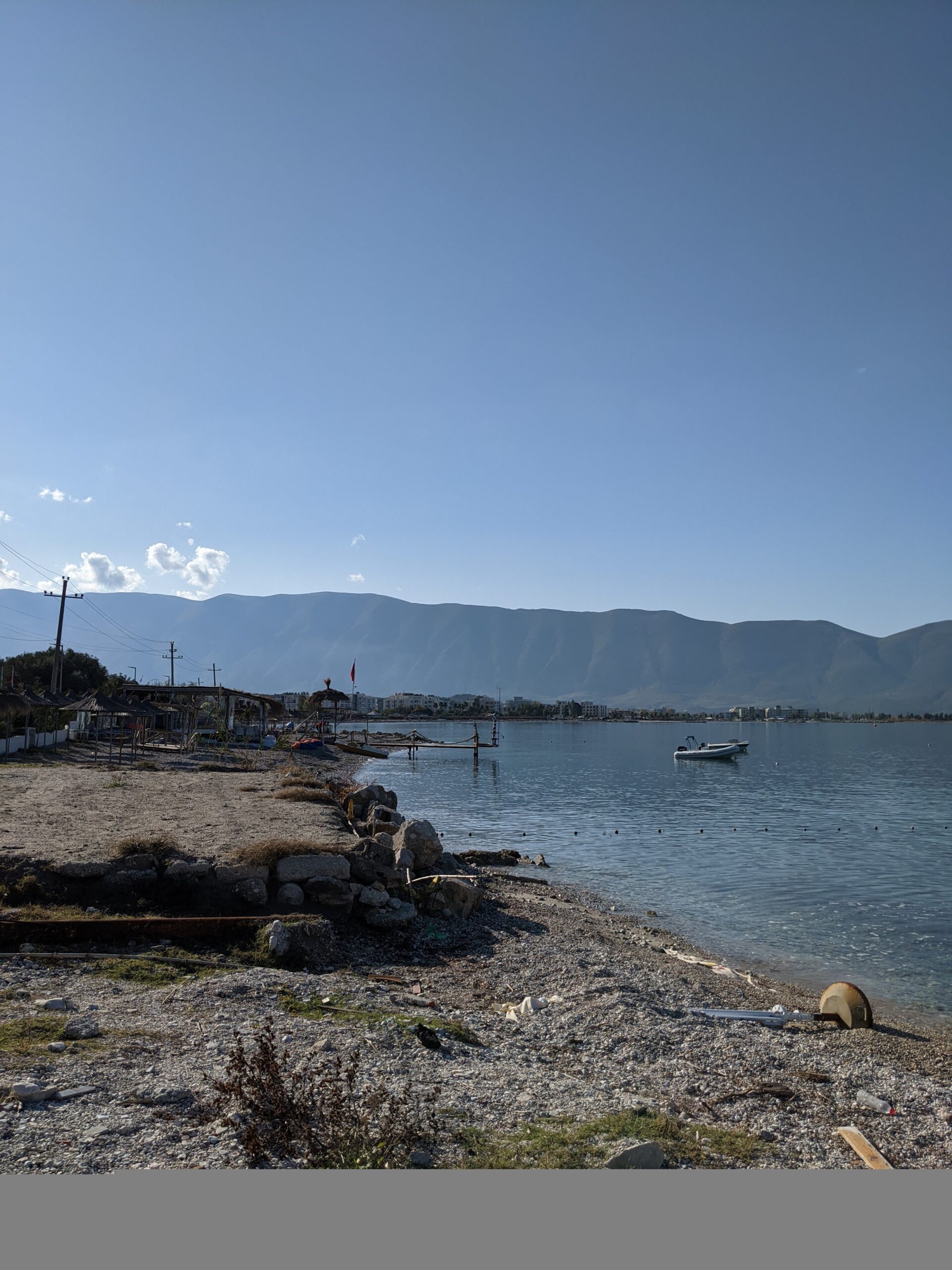
The city already has some very nice spots.
And the mountains around the city make the views very nice. In fact, almost 75% of Albania is covered by mountains.
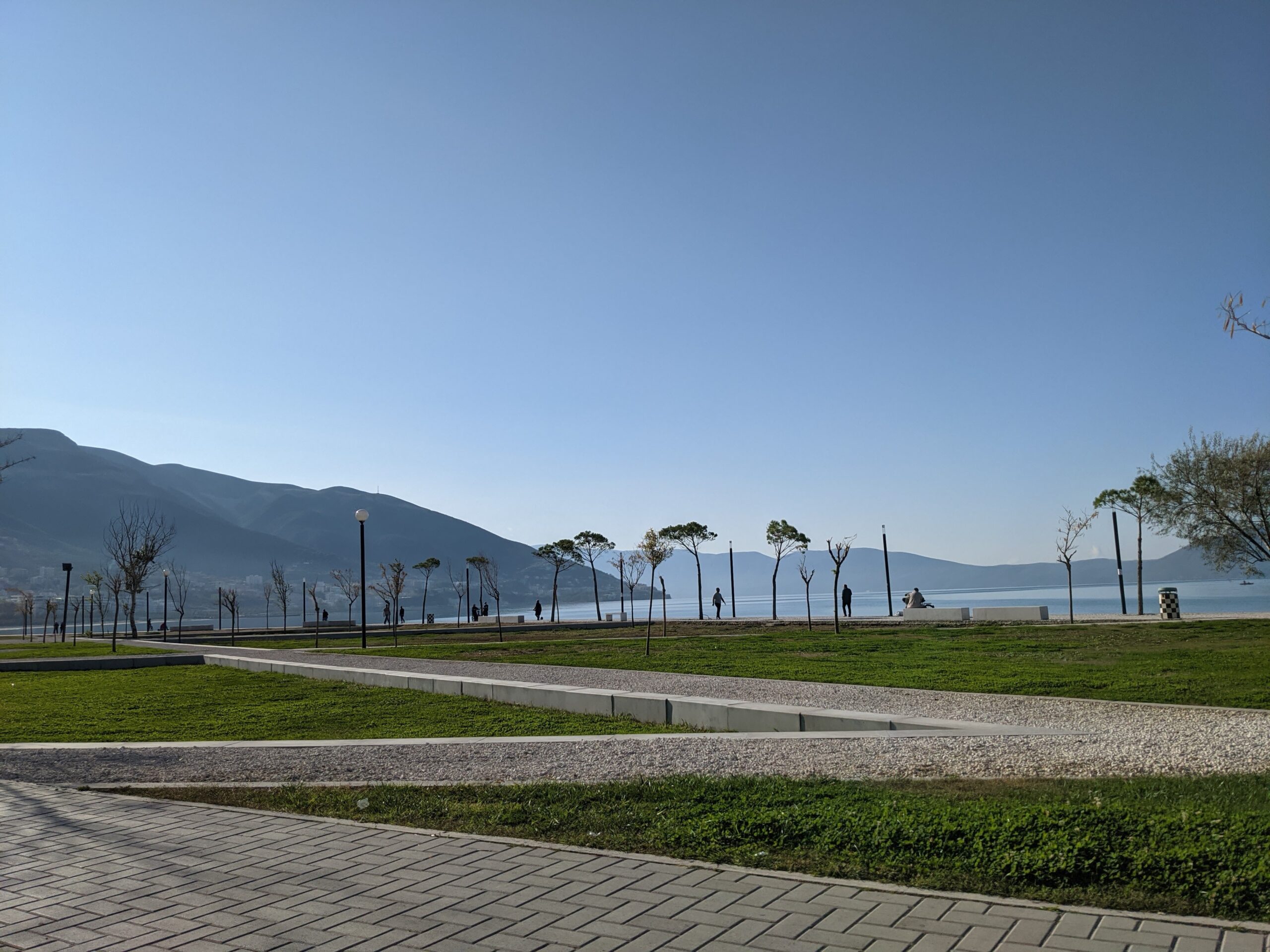
The city also has a long history and it is even where Albanian independence was declared.
By the way, names ending in “ë” in Albania are also sometimes spelled with an “a” (you can see Vlorë or sometimes Vlora for example) and those ending with “ër” are synonymous with “ra” (you can see Gjirokastër or sometimes Gjirokastra for example).
5. Llogara Pass
Continuing south, the mountainous landscapes on the waterfront are really nice, especially around the Llogara Pass at more than 1,000 meters above sea level: You can see a part of the very winding road.
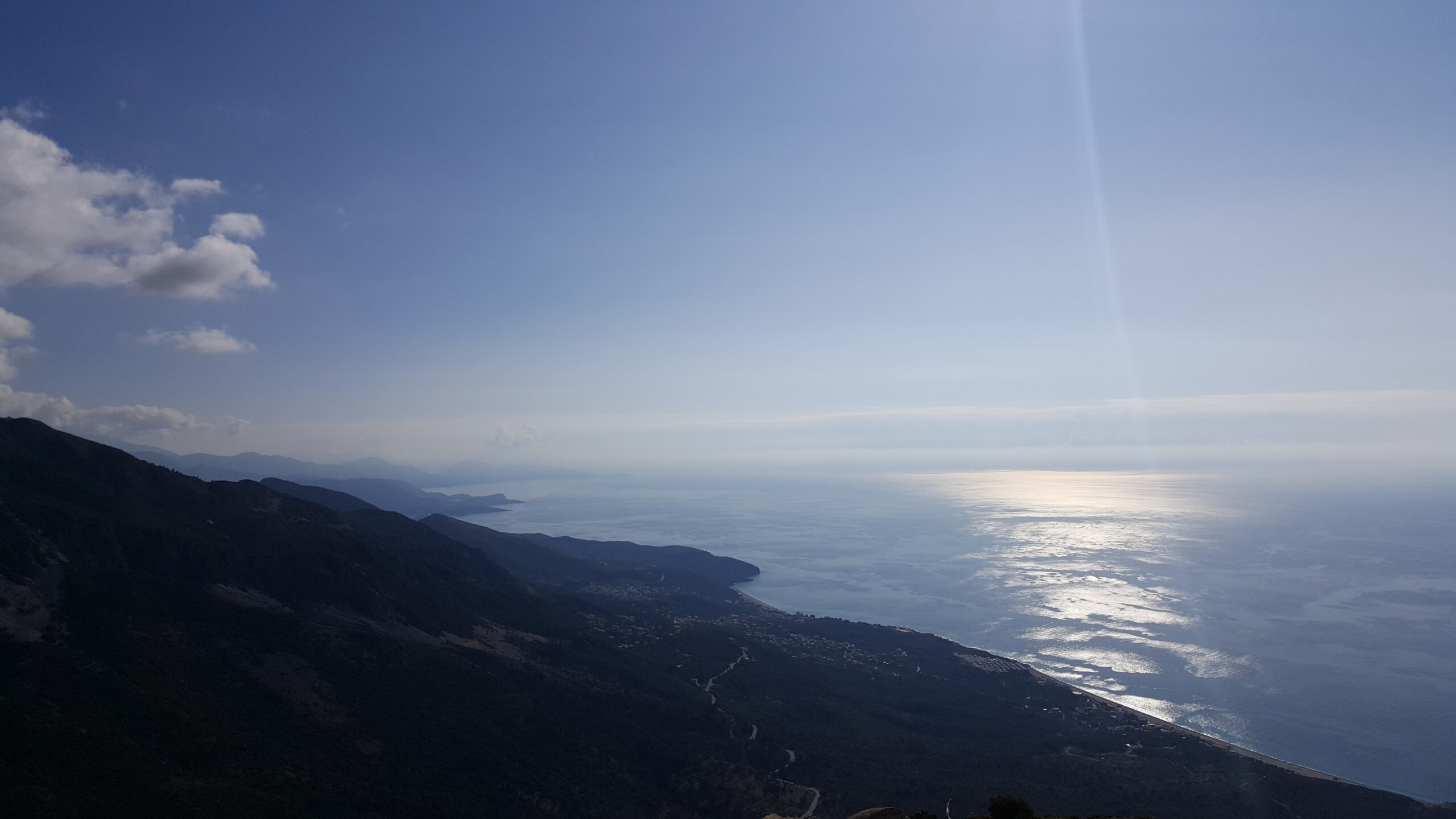
The area is protected and makes up the Llogara National Park.
We explored a bit and were almost at cloud level at this spot.
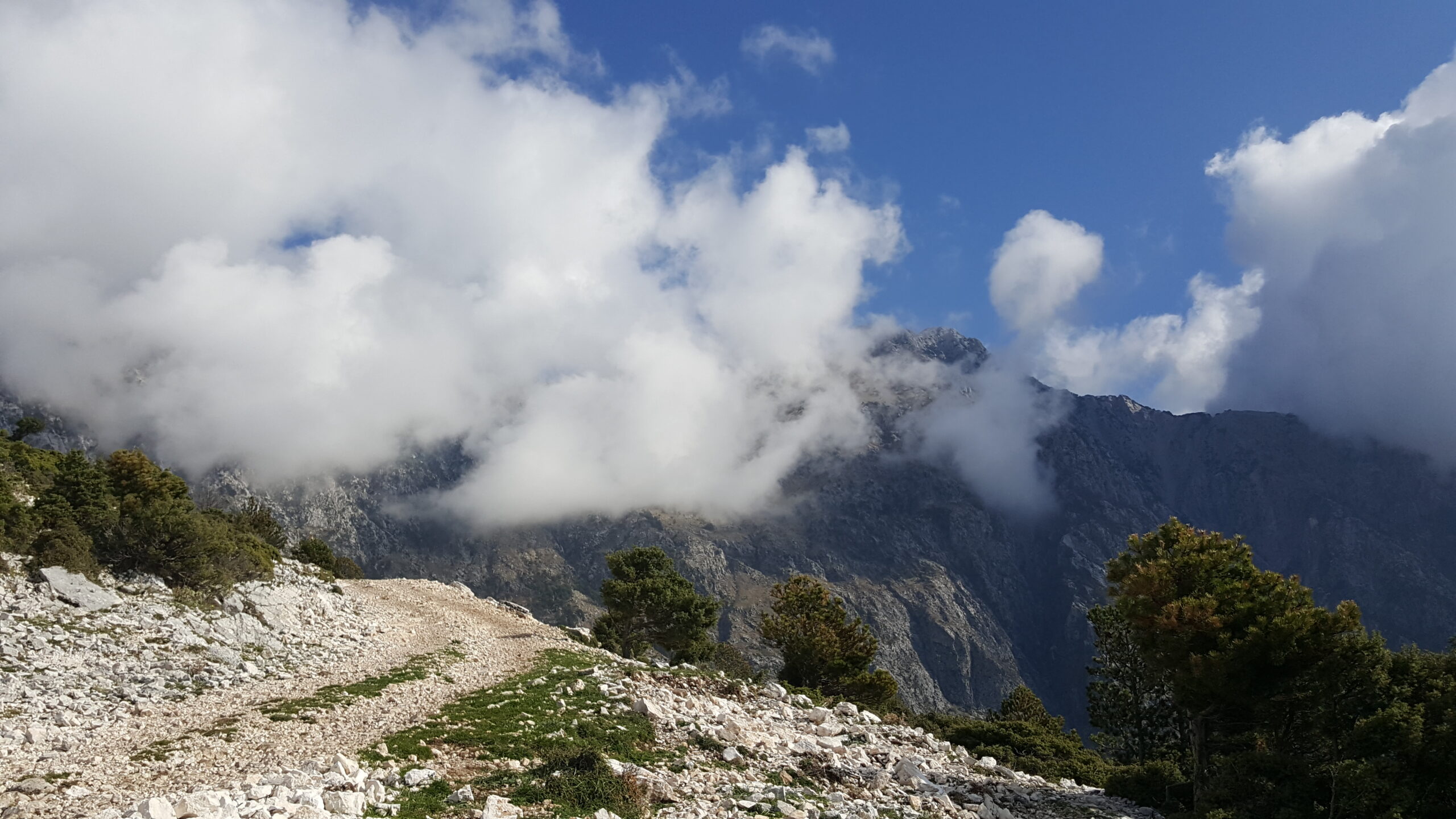
Let’s just say that the combination of mountains and seaside is always a winning landscape.
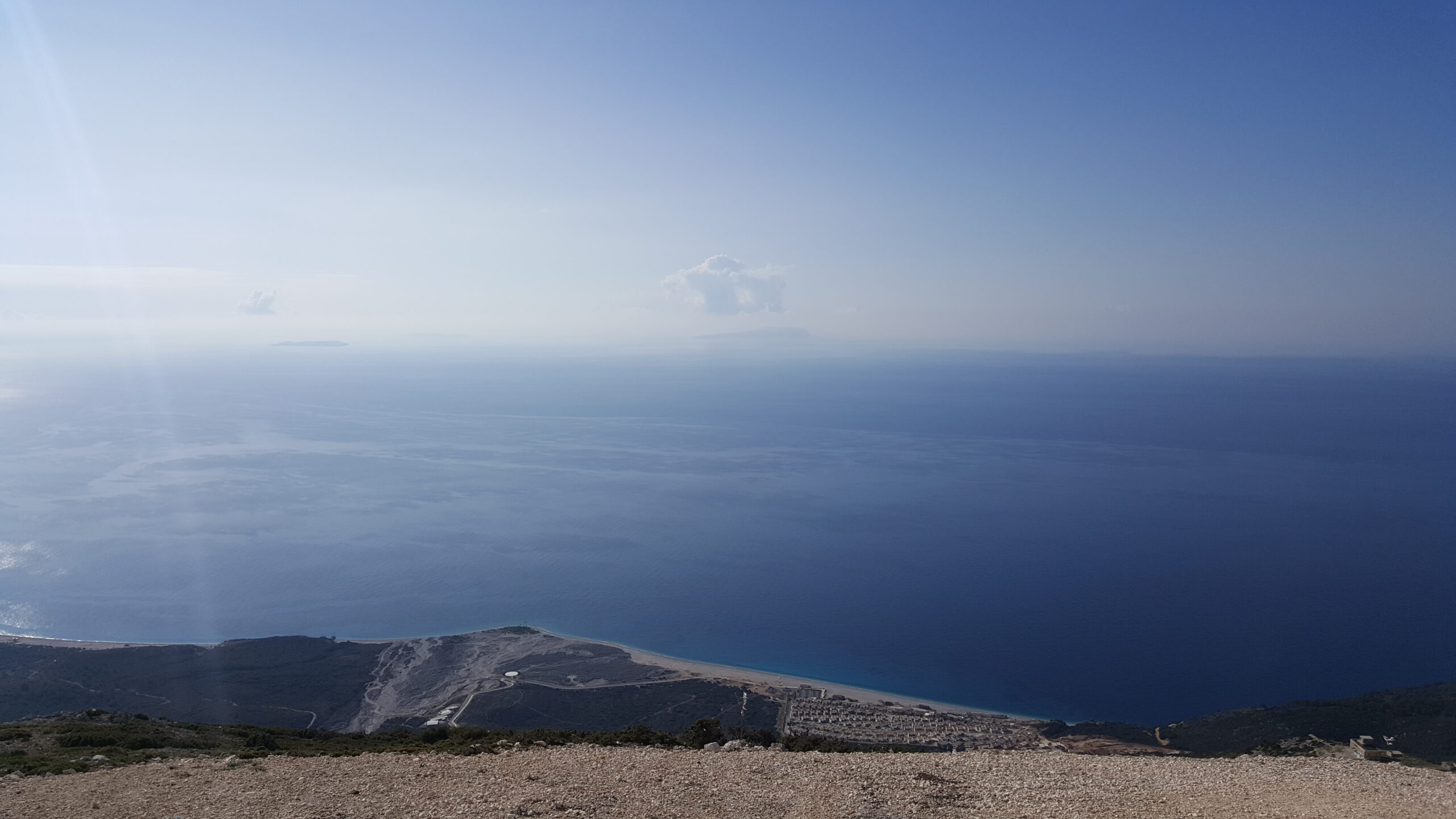
Albania is known for its many beaches.
The small village of Himarë and its beach is one of the many places where you can stop in this part of the country. There are really many.

6. Sarandë
Almost at the southern end of the coast, there is the town of Sarandë.
The Lëkursi Castle was our favorite, a beautiful historical place that has been refurbished into a terrace with an incredible view.

The island just opposite happens to be the famous and popular Greek island of Corfu.
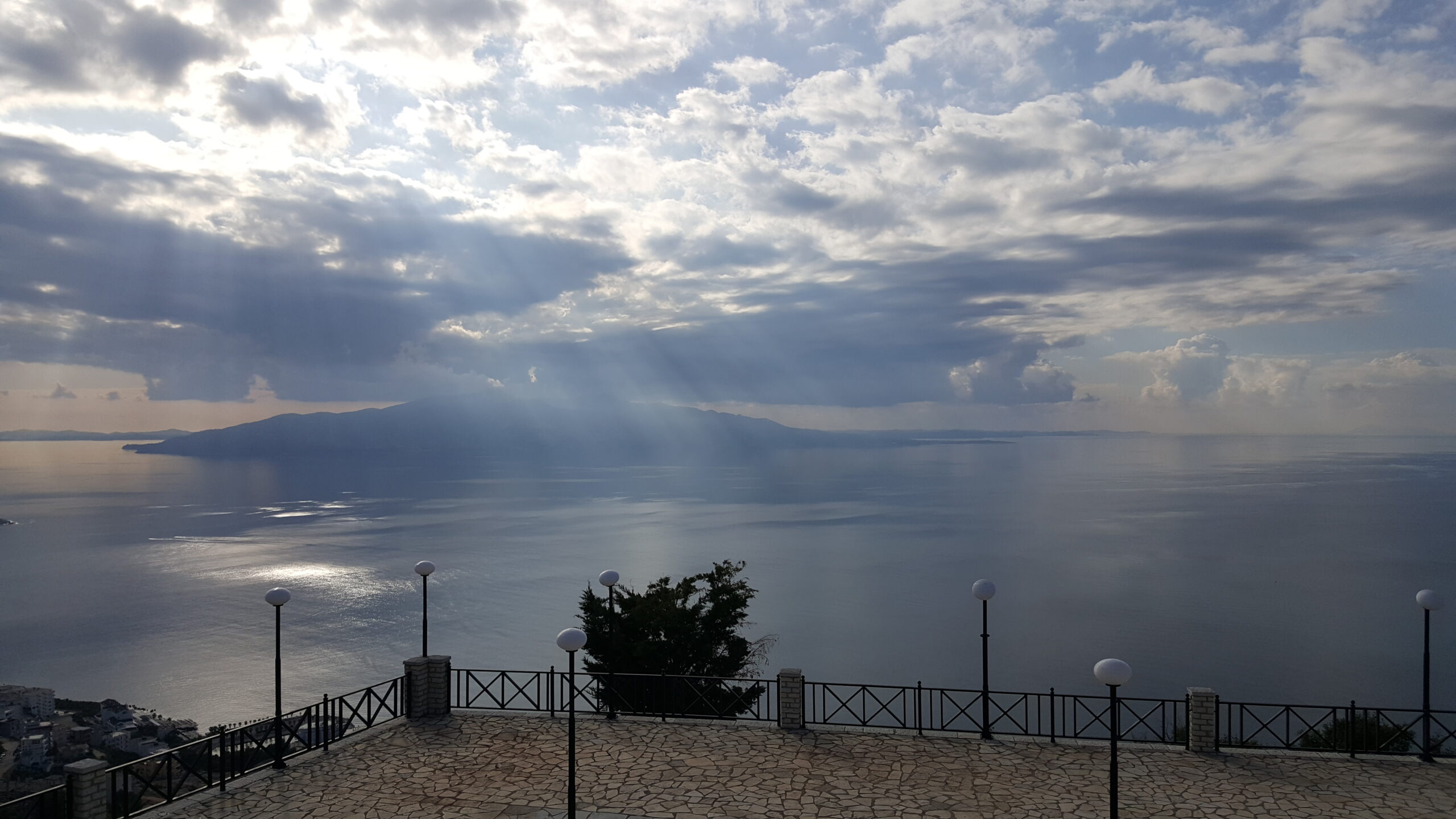
The view of the city of Sarandë is not bad either, despite the telecommunications tower that obstructs a bit.
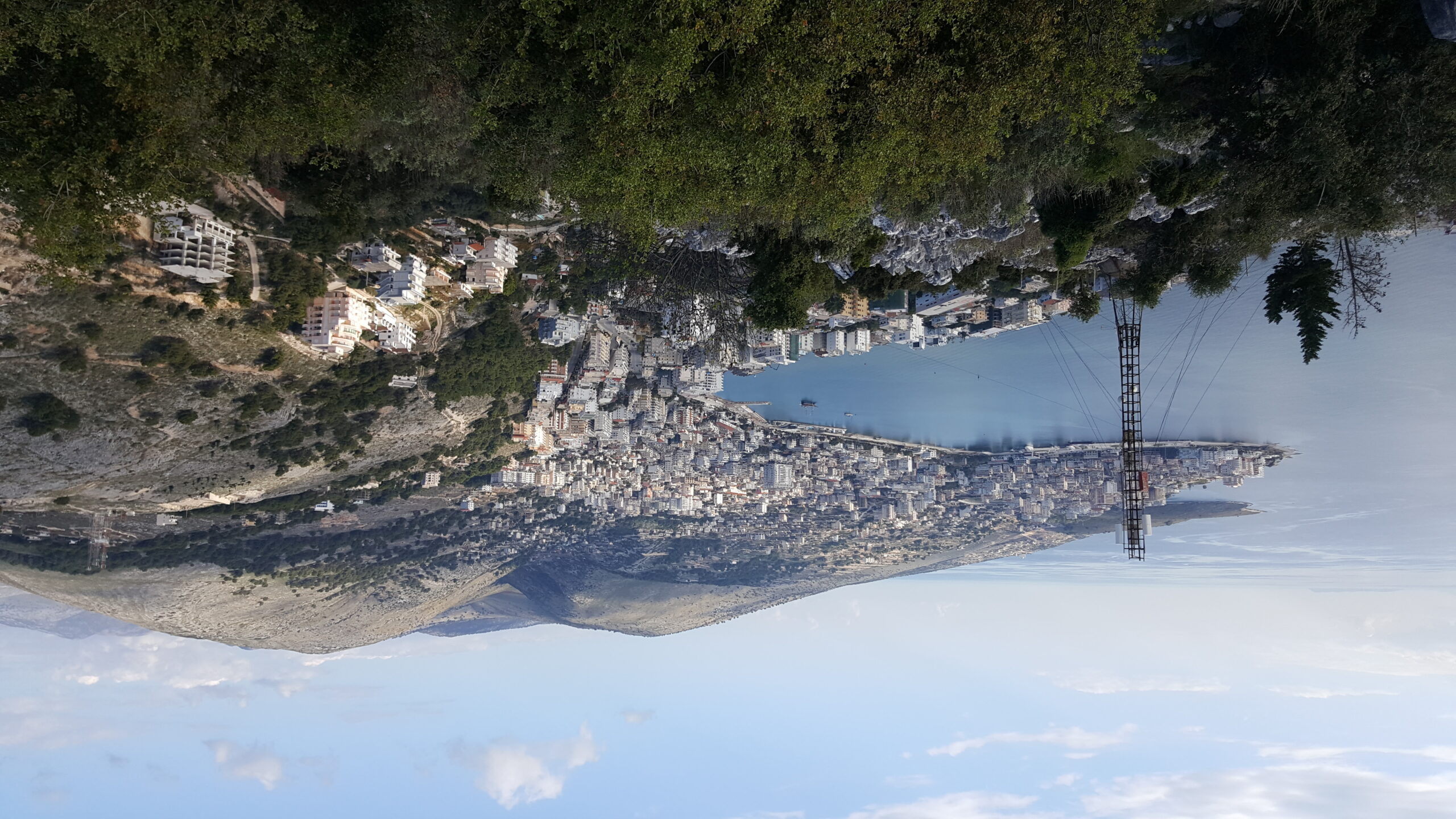
And the view of the nearby valley is nice too.

The restaurant seemed to be closed when we went (damn pandemic) but I would recommend going there!
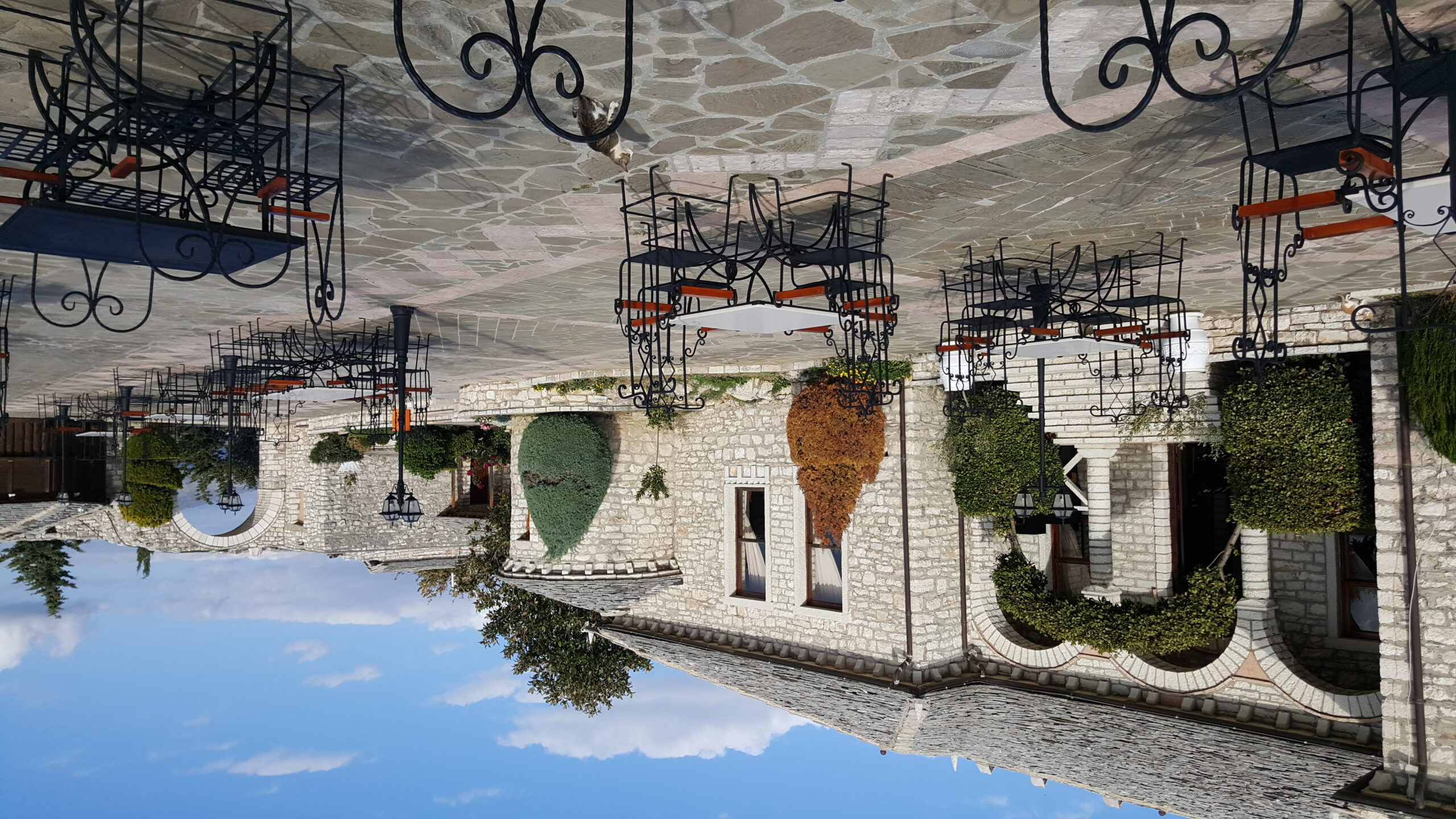
7. Ksamil
One of the most popular places in the country, the small town of Ksamil has a very exotic feel.
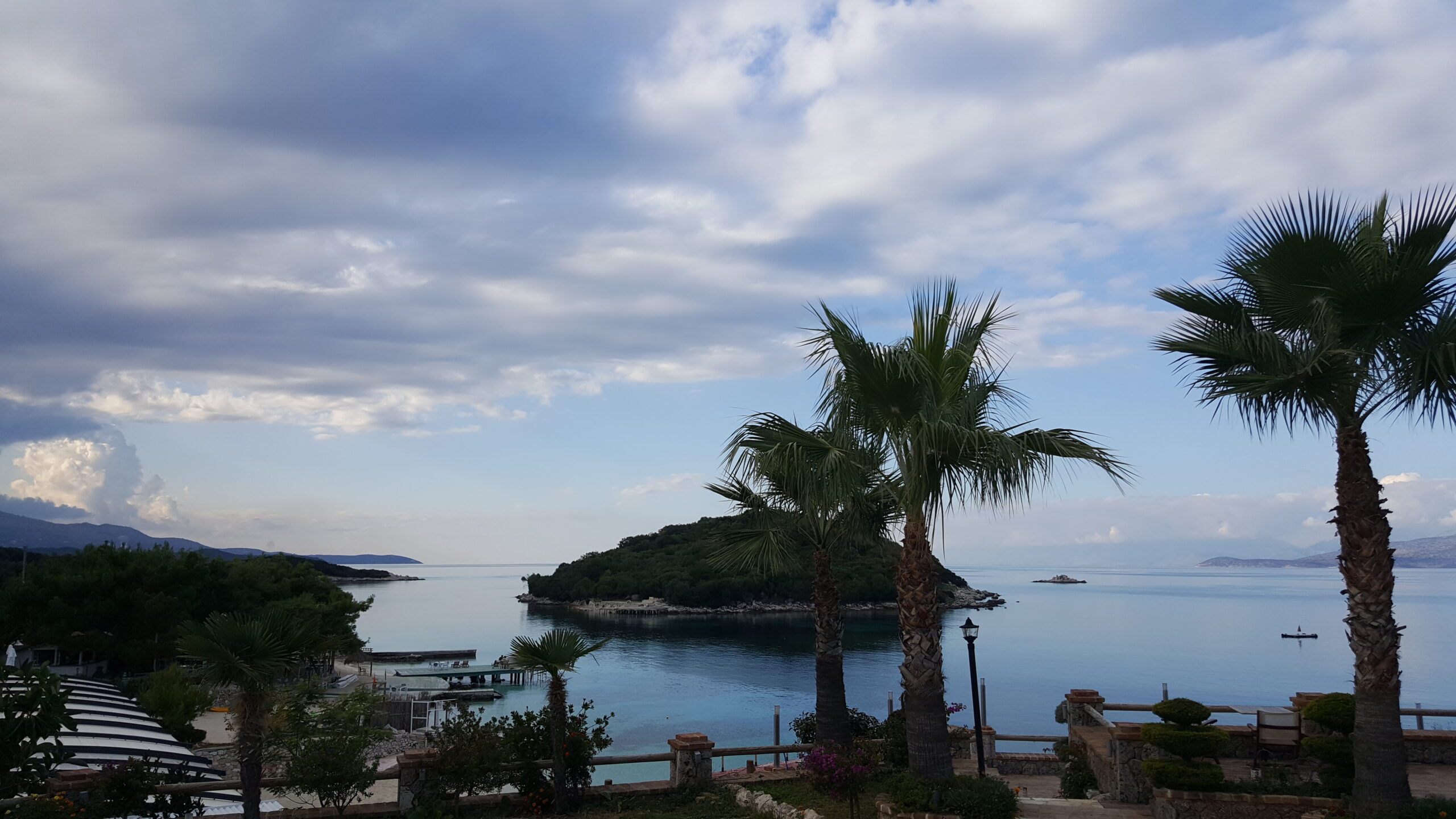
The Mediterranean climate in this area is not particularly warm in November, but it was still very comfortable.
The beach at Ksamil was quite nice, but the village seemed very deserted. It seems like it’s a very seasonal place.
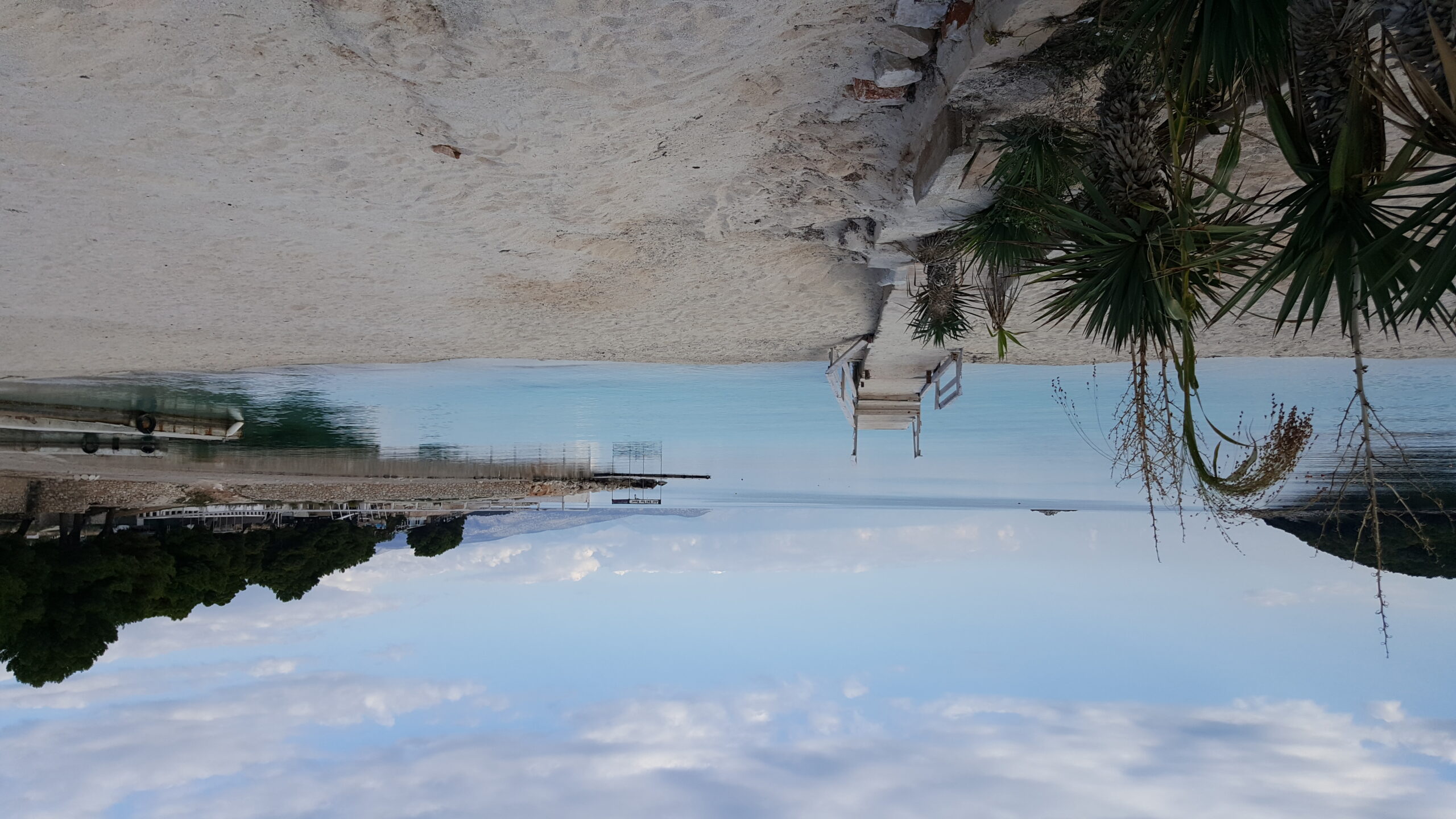
8. Butrint
Butrint is another UNESCO World Heritage Site. Kevin is less of a fan of visiting ruins than I am, so we didn’t pay the site admission fee but went to see the scenery in the national park.
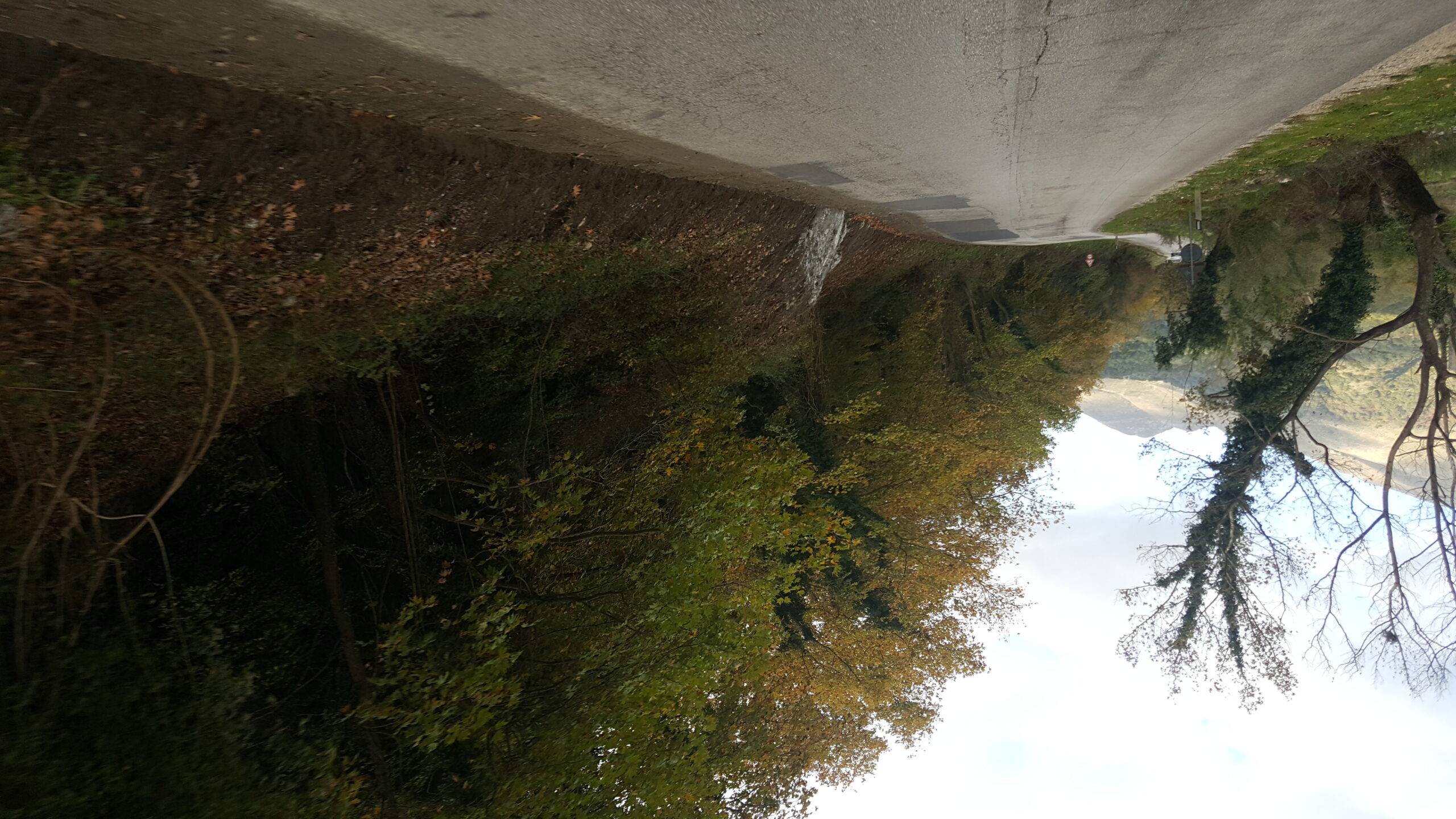
We also got to see something pretty funny, which is the only way to cross this little river: A barge ferry system that looked very shaky.
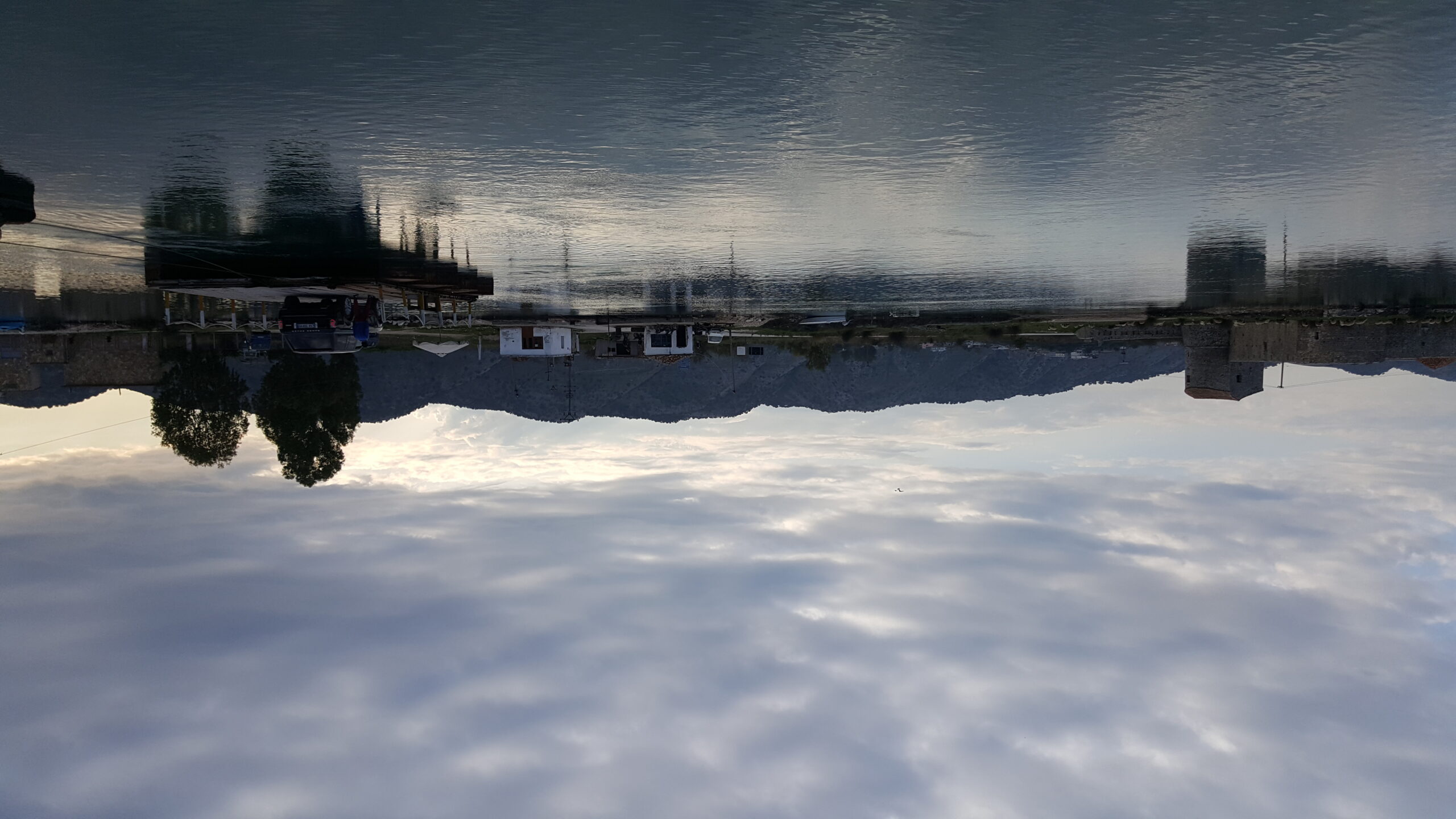
It’s fitting, by the way, that the vehicle on the ferry as we passed was a Land Rover: Back in 2018, an Albanian had explained to us why there is really a lot of Land Rovers in the country, but I can’t remember the reason, unfortunately (and no record of it online strangely).
We didn’t go to see the castle of Ali Pasha either (yes, this Ali Pasha, for those who have already heard the name that is quite famous in literature), but we already had a lot of castles on the itinerary.

9. Blue Eye
As we moved away from the sea towards the valley, we went to see a natural wonder, the Blue Eye.
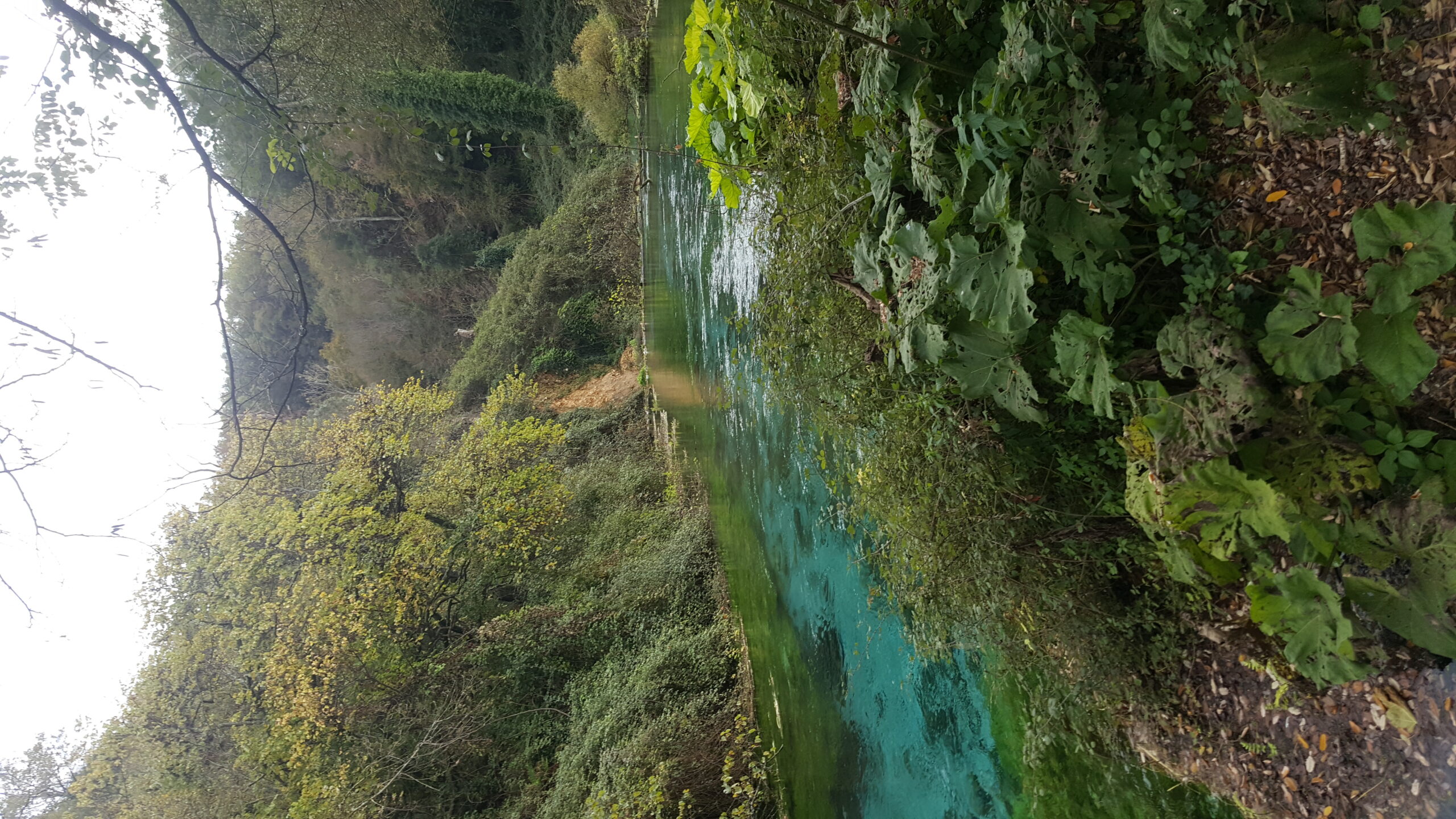
It’s a nice quiet place to relax in nature. To admire both the water and the nice trees.
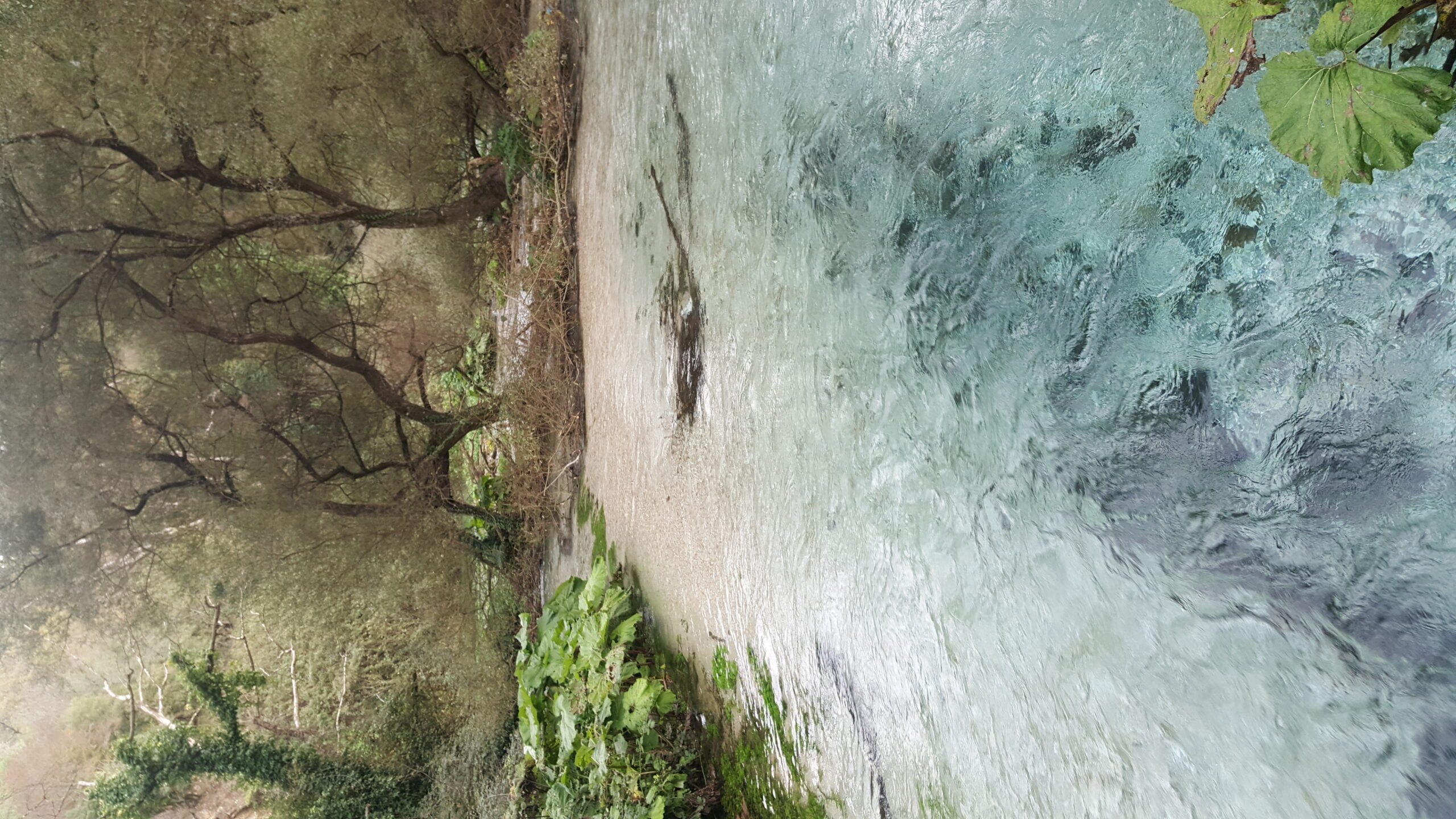
The Blue Eye name comes from the water which is really very blue in places. But what makes this place special is that nobody really knows how deep this spring really is.
It’s somewhat of a mystery.
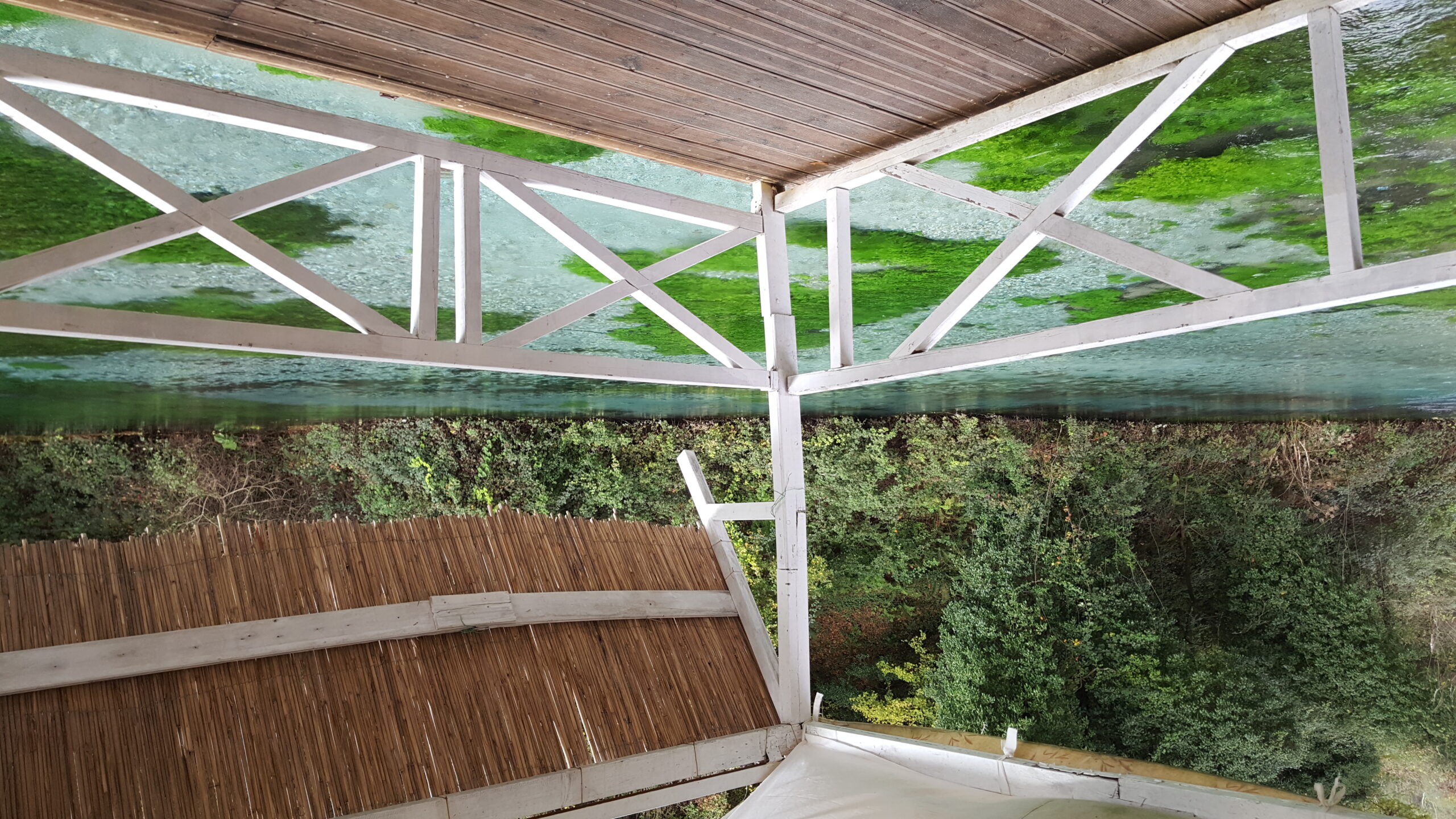
It’s a very short walk to get there from the site’s parking lot, which was completely deserted during our visit.
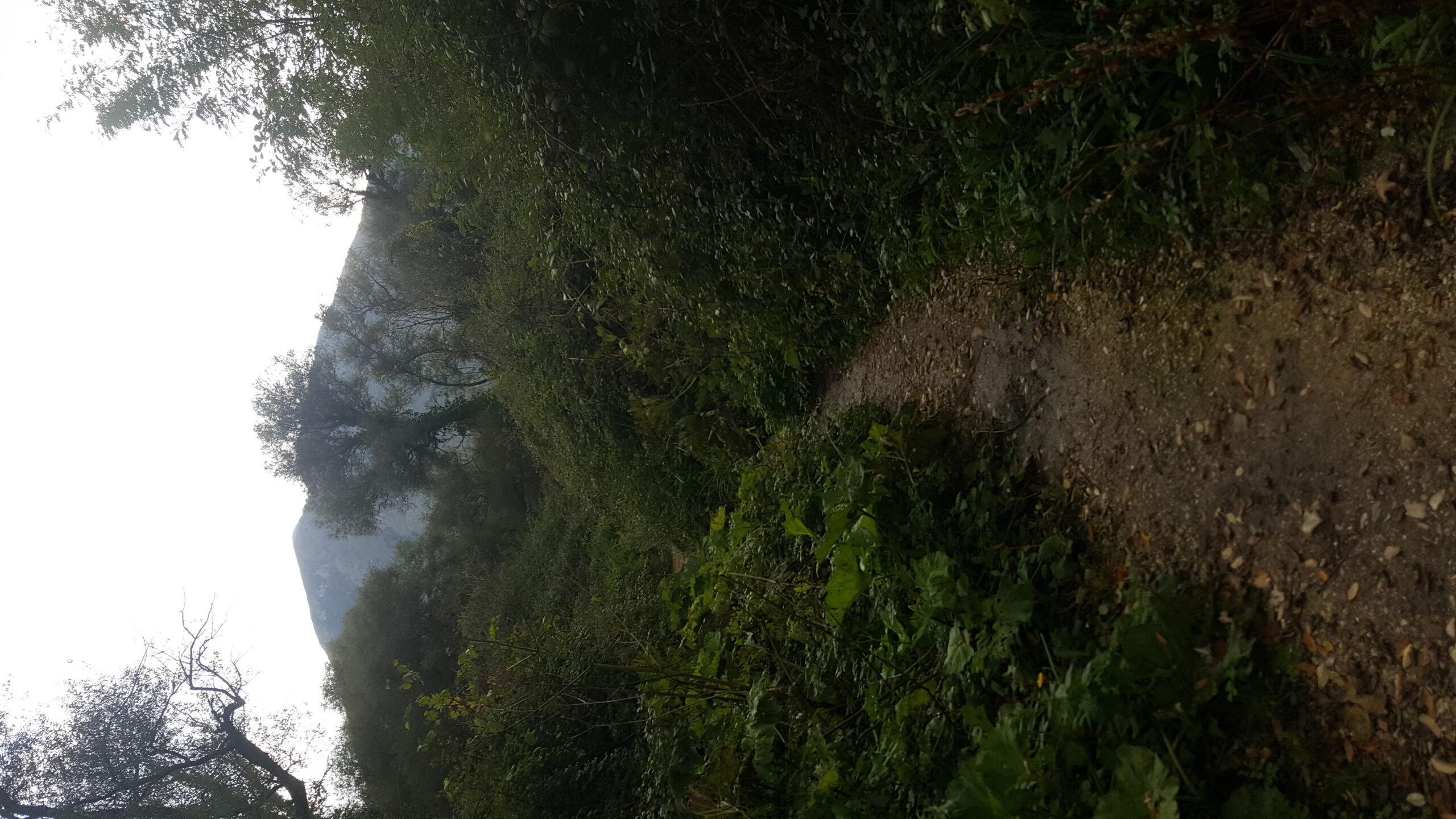
10. Gjirokastër
As soon as we entered the county of Gjirokastër, there is a beautiful view of the Drino valley.

Several small villages are located directly on the mountainside.
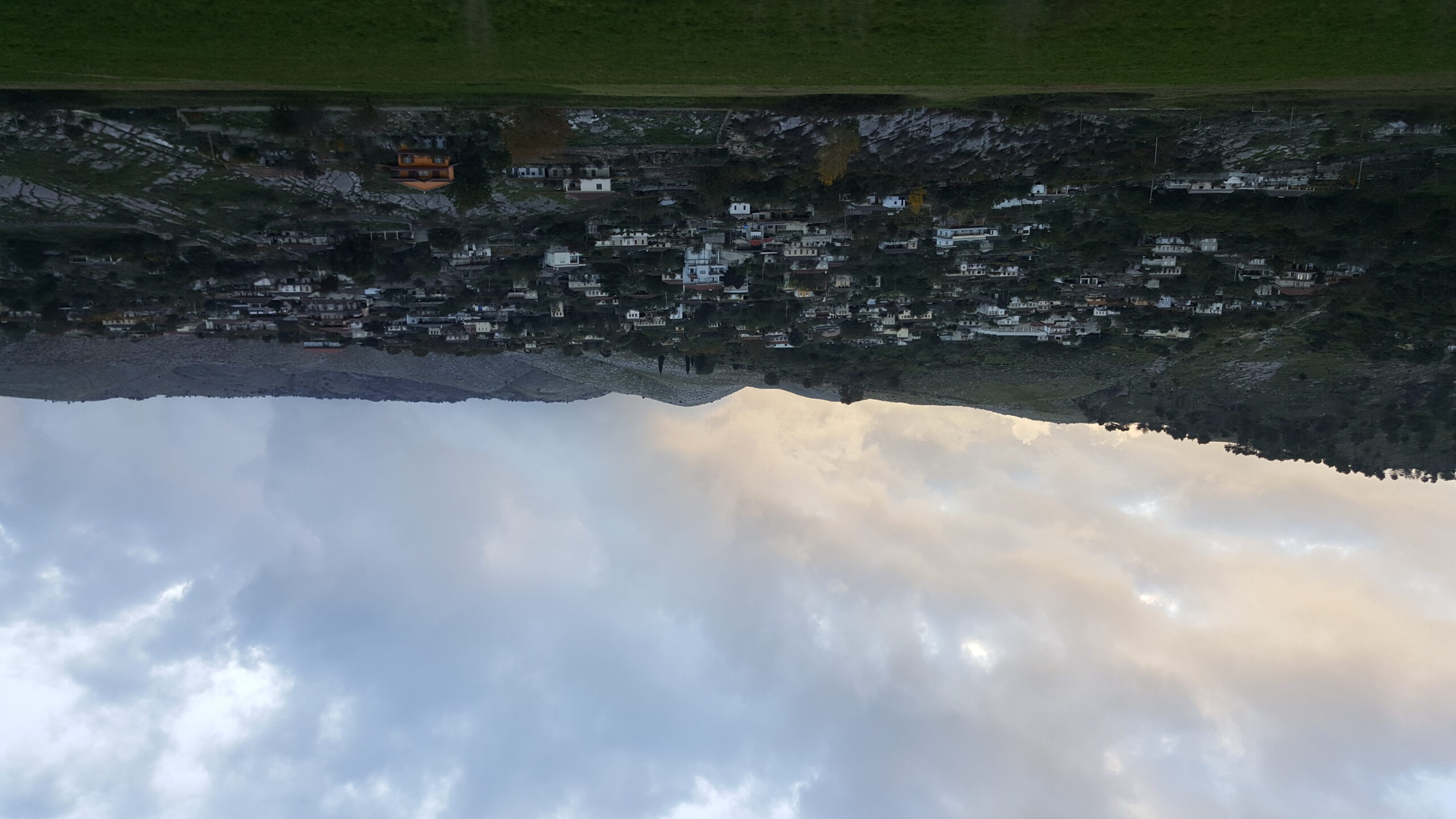
But it is really the town of Gjirokastër itself that is exceptional. The historical center is like an open-air museum, but it is mostly that it is huge.
There’s a reason it is classified as a World Heritage Site by UNESCO as I said above.
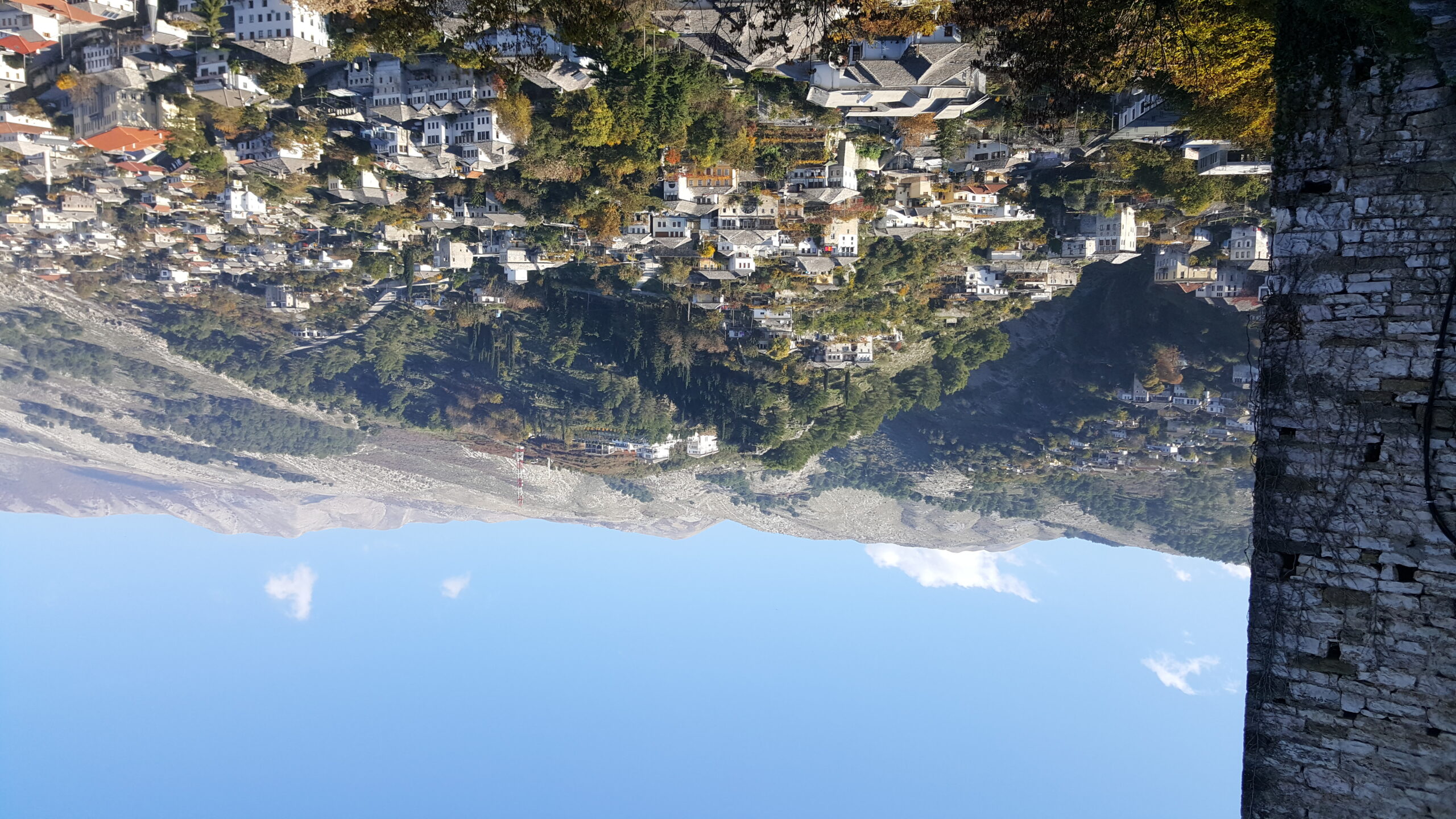
The fortress in the center is a must-see, if only for the beautiful views of the whole Ottoman city, one of the best-preserved in the world!
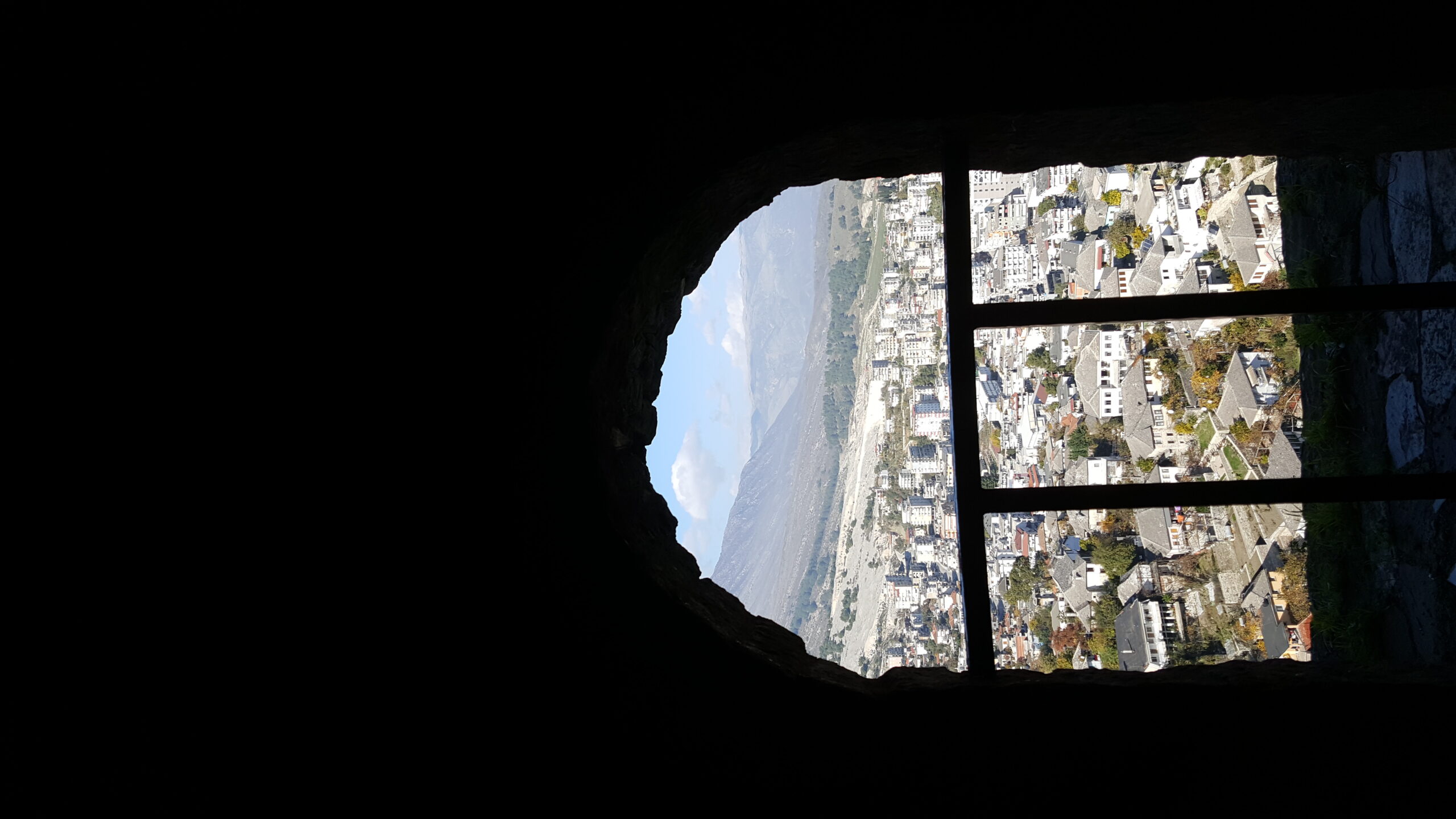
But even the whole fortress complex is very interesting.
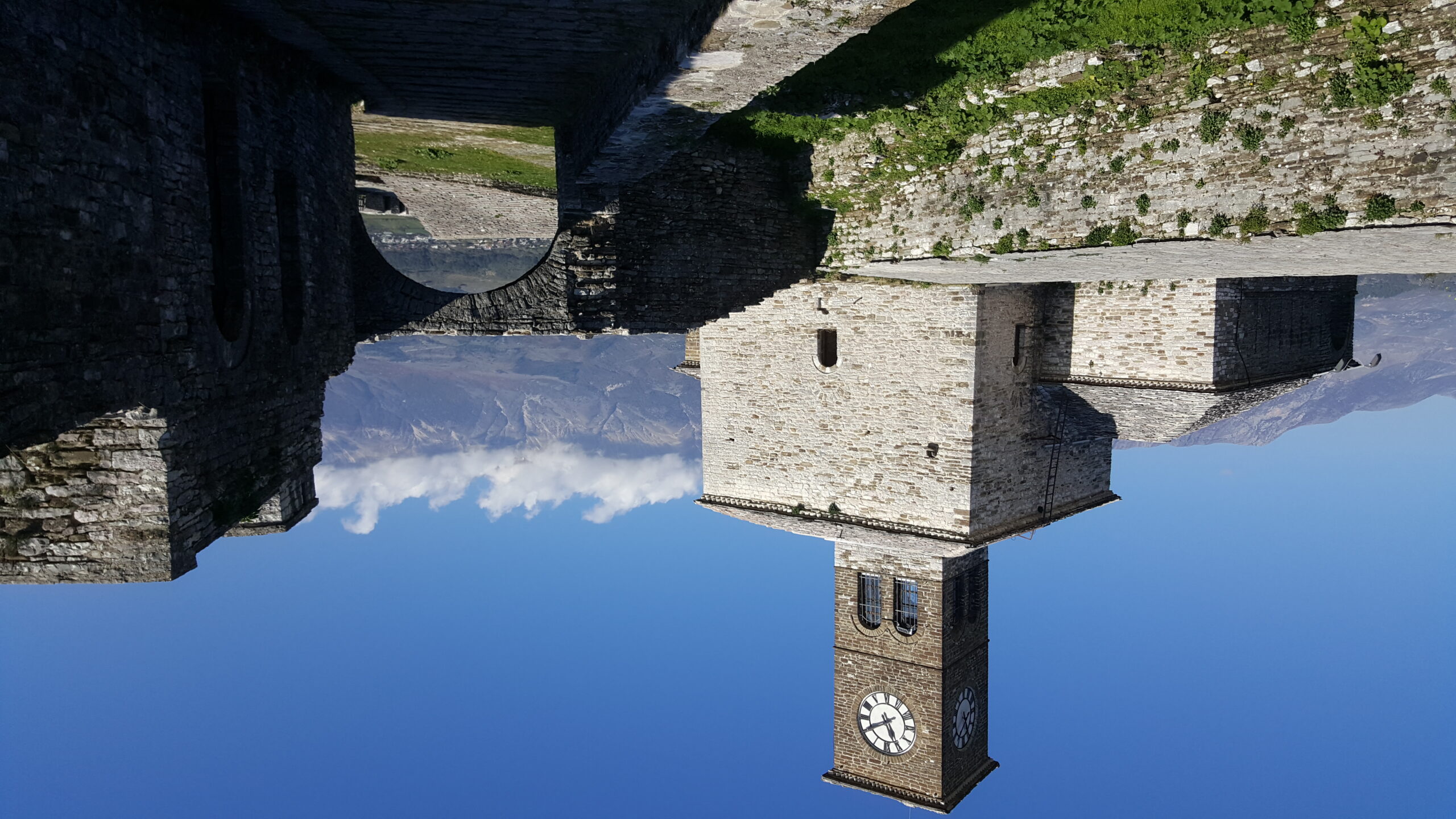
Gjirokastër was even the capital of the Autonomous Republic of Northern Epirus, a country self-proclaimed by Greeks of the region in 1914 in protest to Albanian independence the year before.
It lasted only a few months.

Even more than Berat (because the old town seemed even more lively and authentic here), it was like walking around and going back a few centuries.
The city is often called the city of stones, because the roofs of many of the buildings are made of flat stones (like the one on the right of our hotel if you look closely).
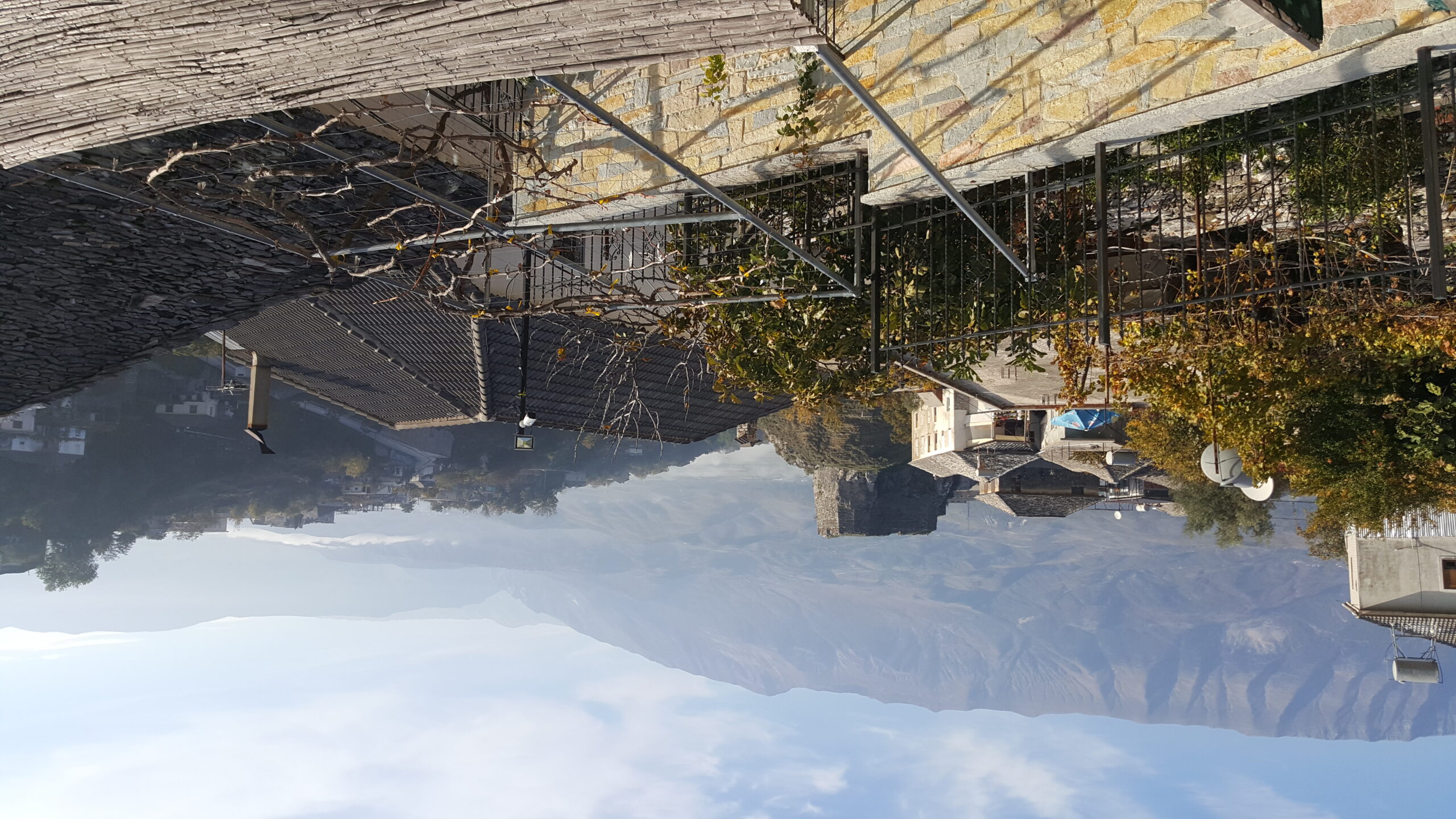
Our hotels will be covered in the post about travel logistics, but we have to mention our favorite hotel of the trip, right in the historical center of Gjirokastër, the Hotel Kalemi 2.
The view when we woke up was very beautiful.
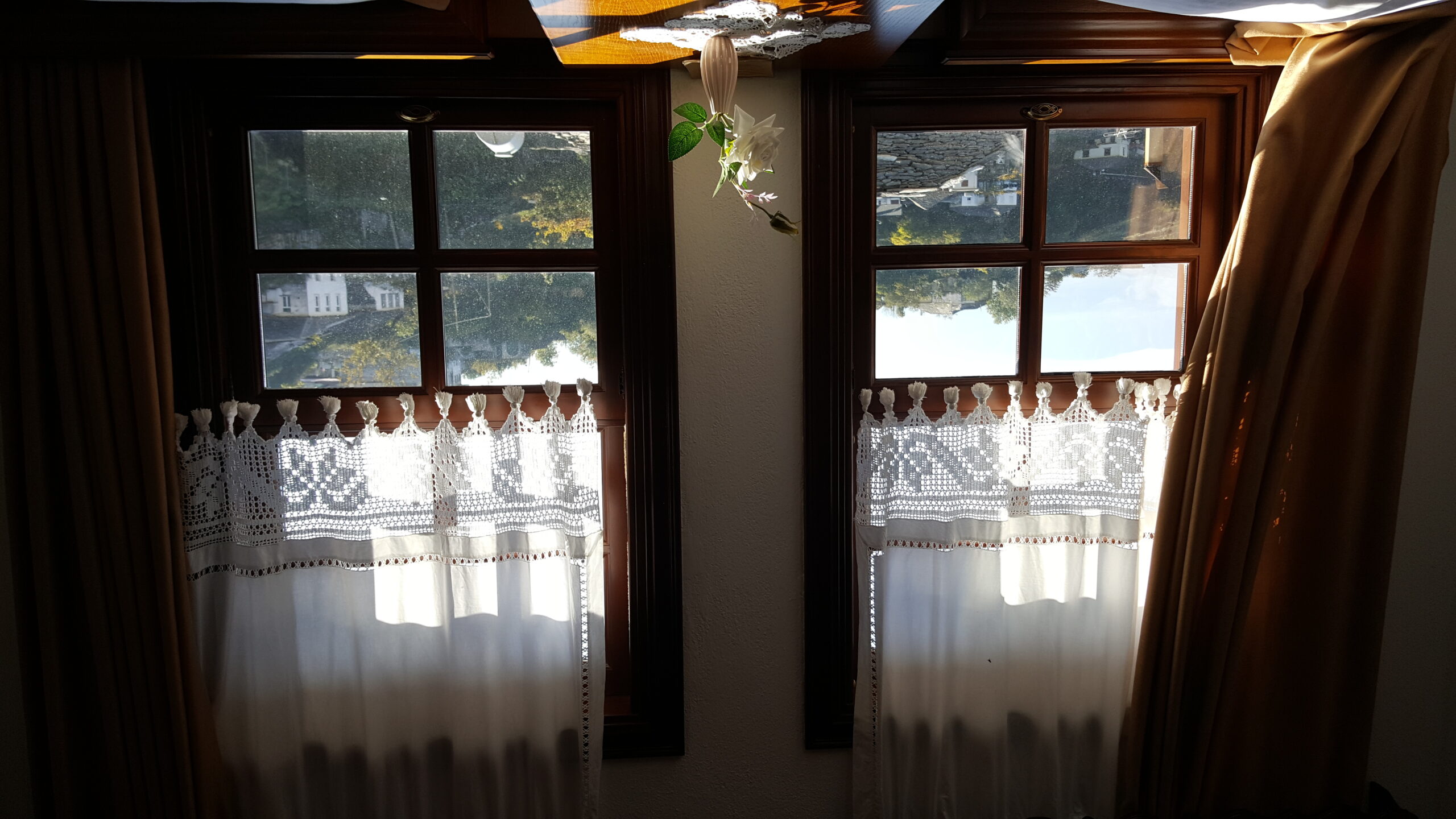
We were always welcomed very warmly everywhere: Albanians happen to be known for their hospitality.
11. Krujë
Going towards the north of the country, just after Tirana, there is yet another mountain town with a castle.

This was probably the best-preserved/best-rebuilt castle among those we saw.
The view of the city was again interesting, especially with the imposing clouds hiding the top of the mountain.

For history lovers, the castle is famous for having survived many Ottoman invasions in the 15th century.
This makes Albanians very proud.

The pretty Albanian flag, with its two-headed eagle, comes from the name of the country in Albanian: Albania is actually called Shqipëri, which means “land of eagles”.
12. Shkodër
The main city in the north of the country, Shkodër is notably a starting point for the iconic hikes in the Theth National Park and the Albanian Alps (also known as the “Accursed Mountains”).
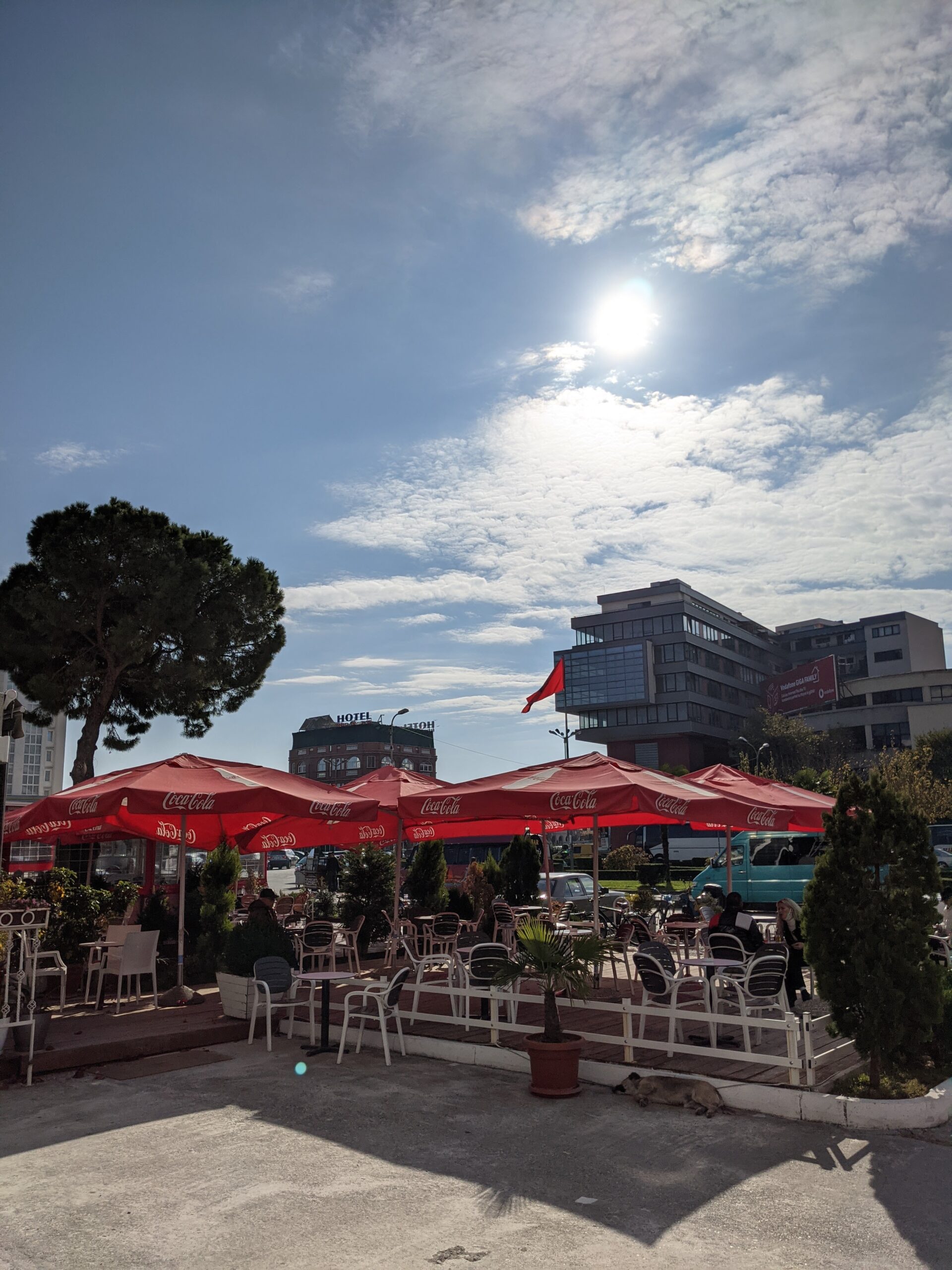
We didn’t go to the park, but we visited the city, which is one of the most important in the country culturally.

We also visited another castle, the castle of Rozafa (or also called the castle of Shkodër).
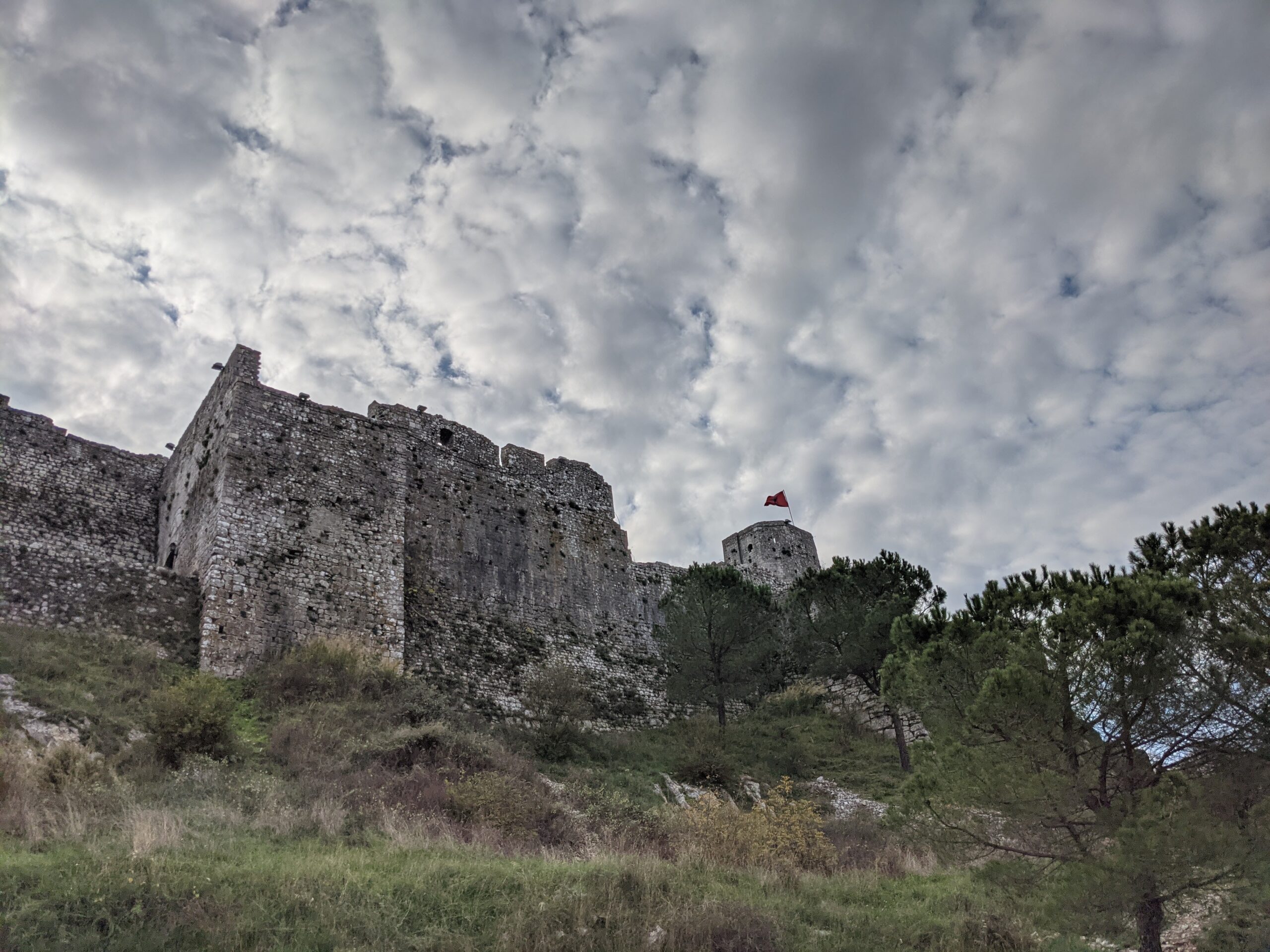
The legend says that the wife of one of the builders of the castle agreed to be sacrificed by being locked alive between the walls of the castle so that the foundations would hold.
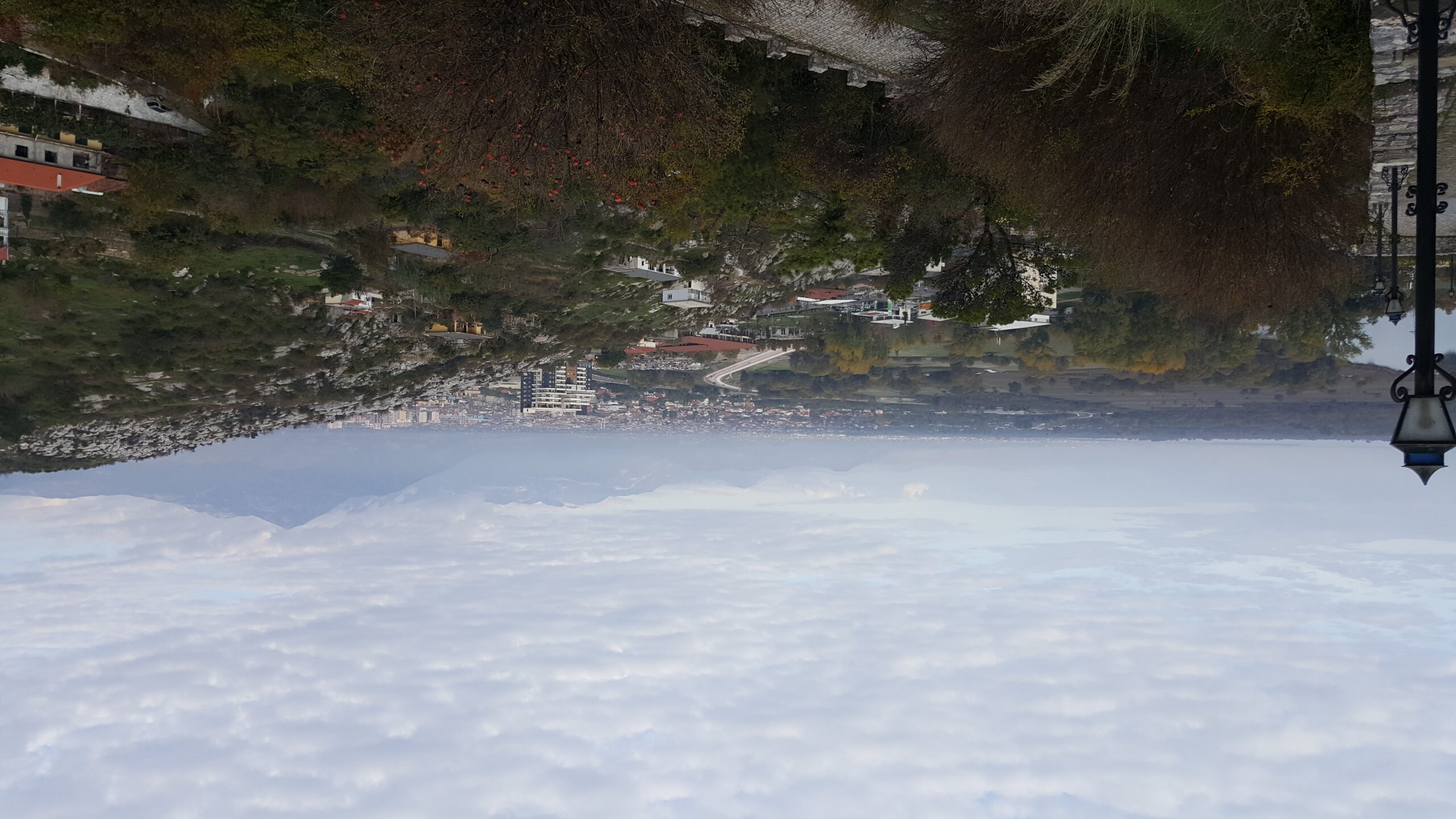
Before going to the castle, we also went for a drive in the residential streets around it to make our way to the Lead Mosque, so named because its domes were covered with lead (most of the lead was stolen since its construction a few hundred years ago).
You can see it pretty well from above and you may notice that the usual minaret is missing, because it was destroyed by a lightning strike in 1967.
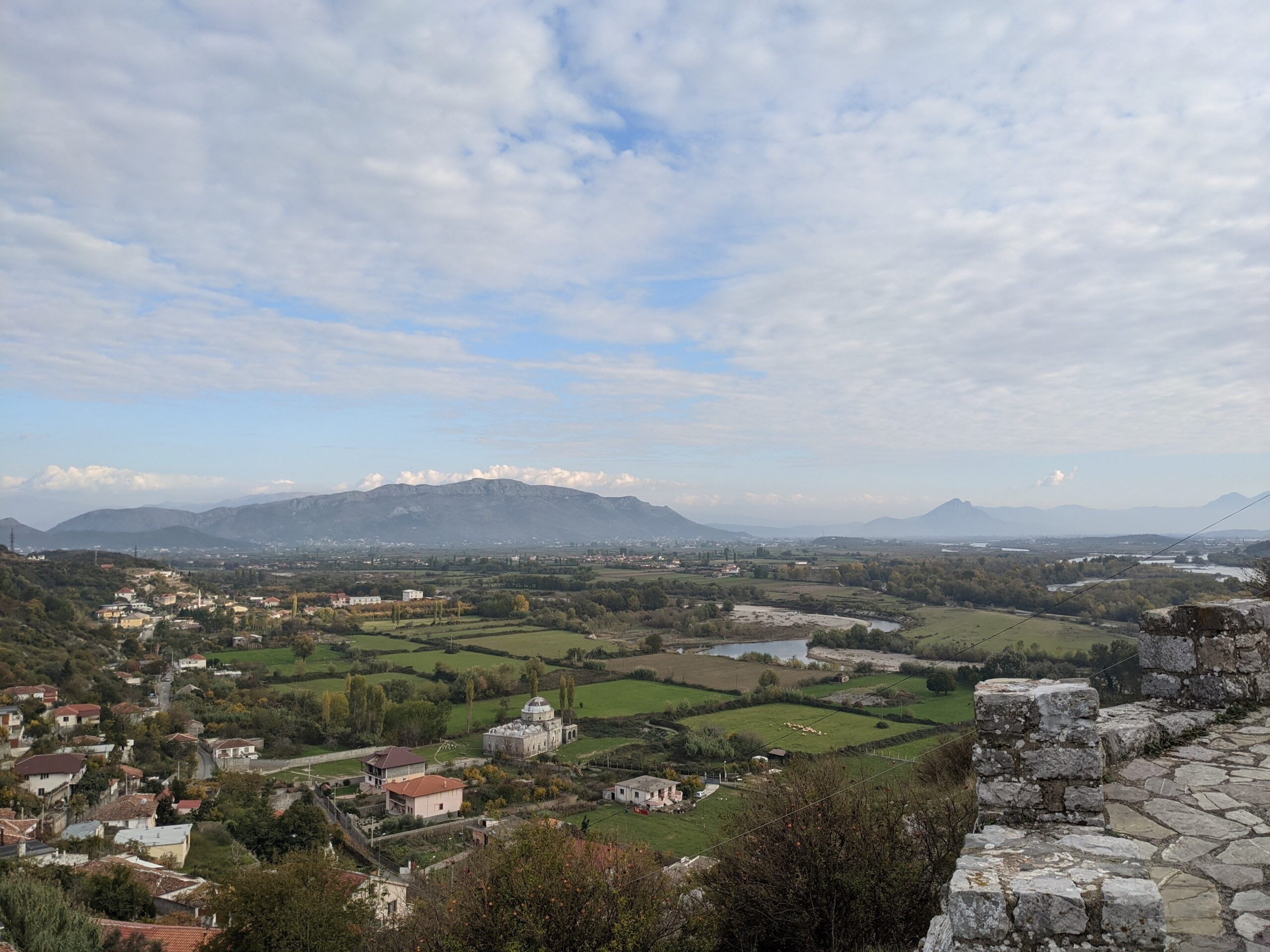
13. Drisht
The farthest we went was to Drisht. The landscapes are magnificent.
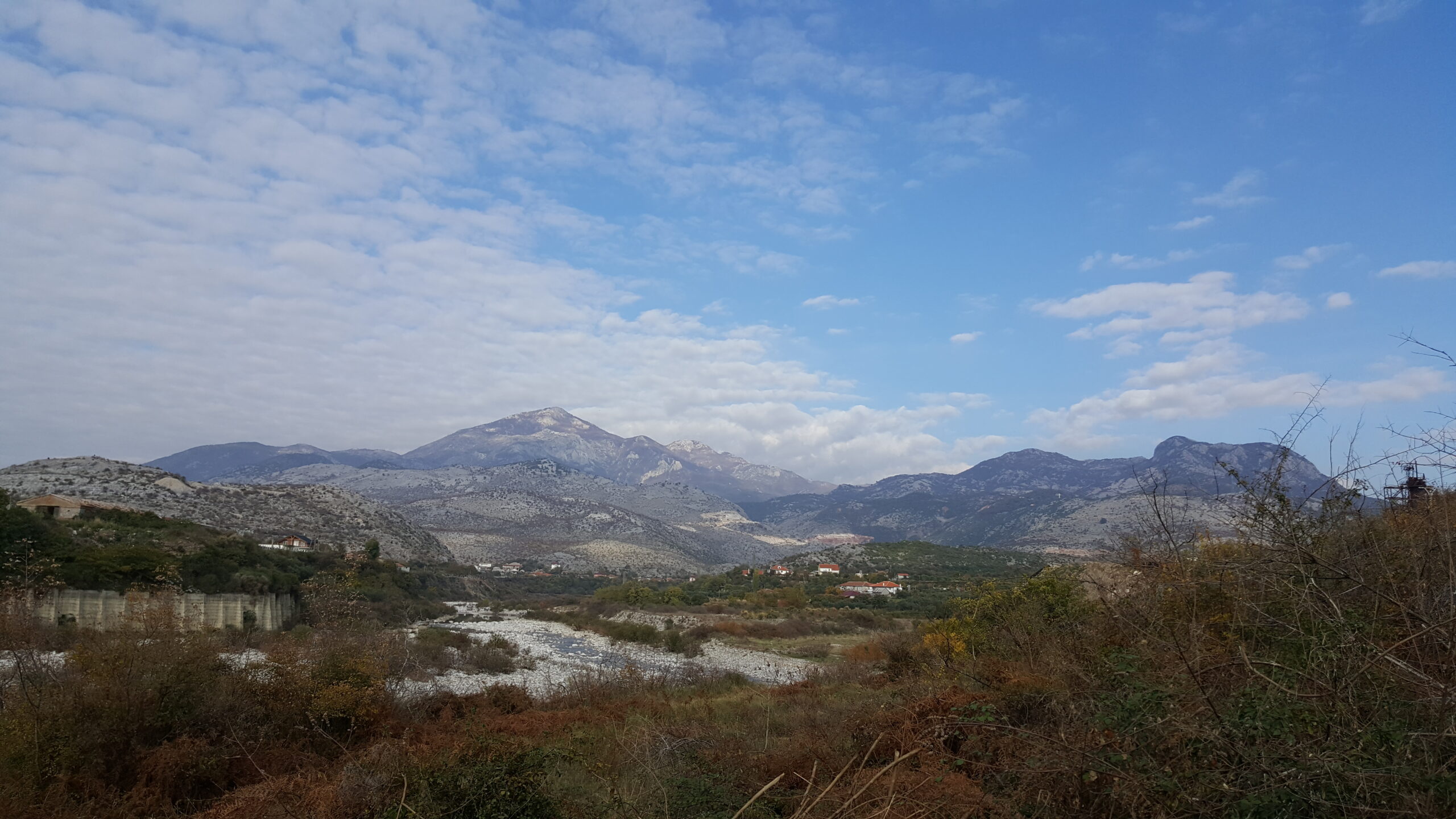
There is also the nice Mesi Bridge, which is a few hundred years old.
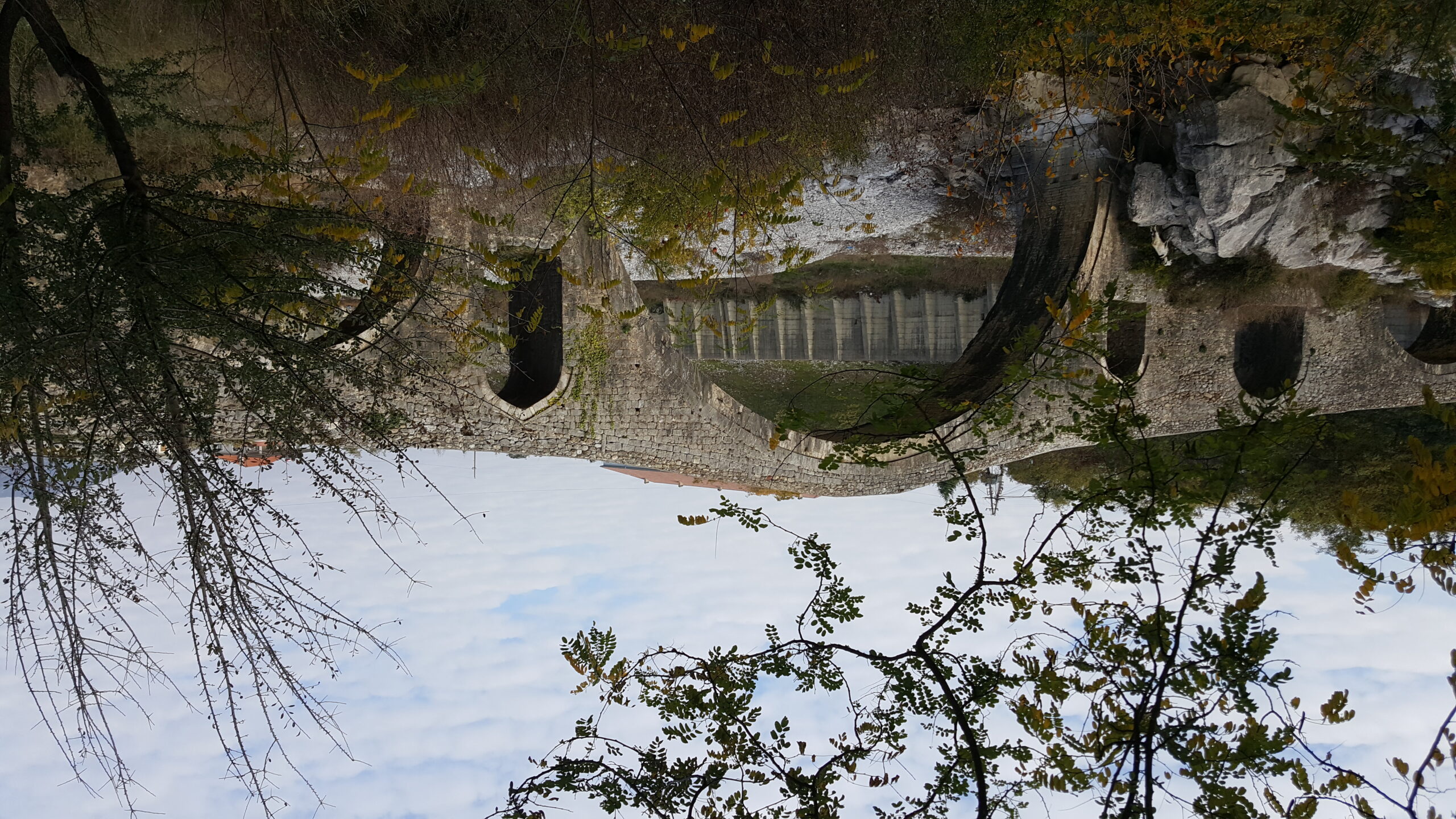
14. Kavajë and Lezhë
Finally, at some moments we decided to stop in some random small towns, as we love to do when we have the freedom that a rental car provides.
In the north, we took the time to eat in Lezhë. Note that being close to Greece and Italy, the food is good in Albania. And most importantly, it’s more affordable (yes, the same gyros that are €3 in Greece are even cheaper in Albania).

And south of Durrës, the little town of Kavajë was quite pretty.

A little further south, on the main road (SH4), we saw this strange motel behind a gas station.
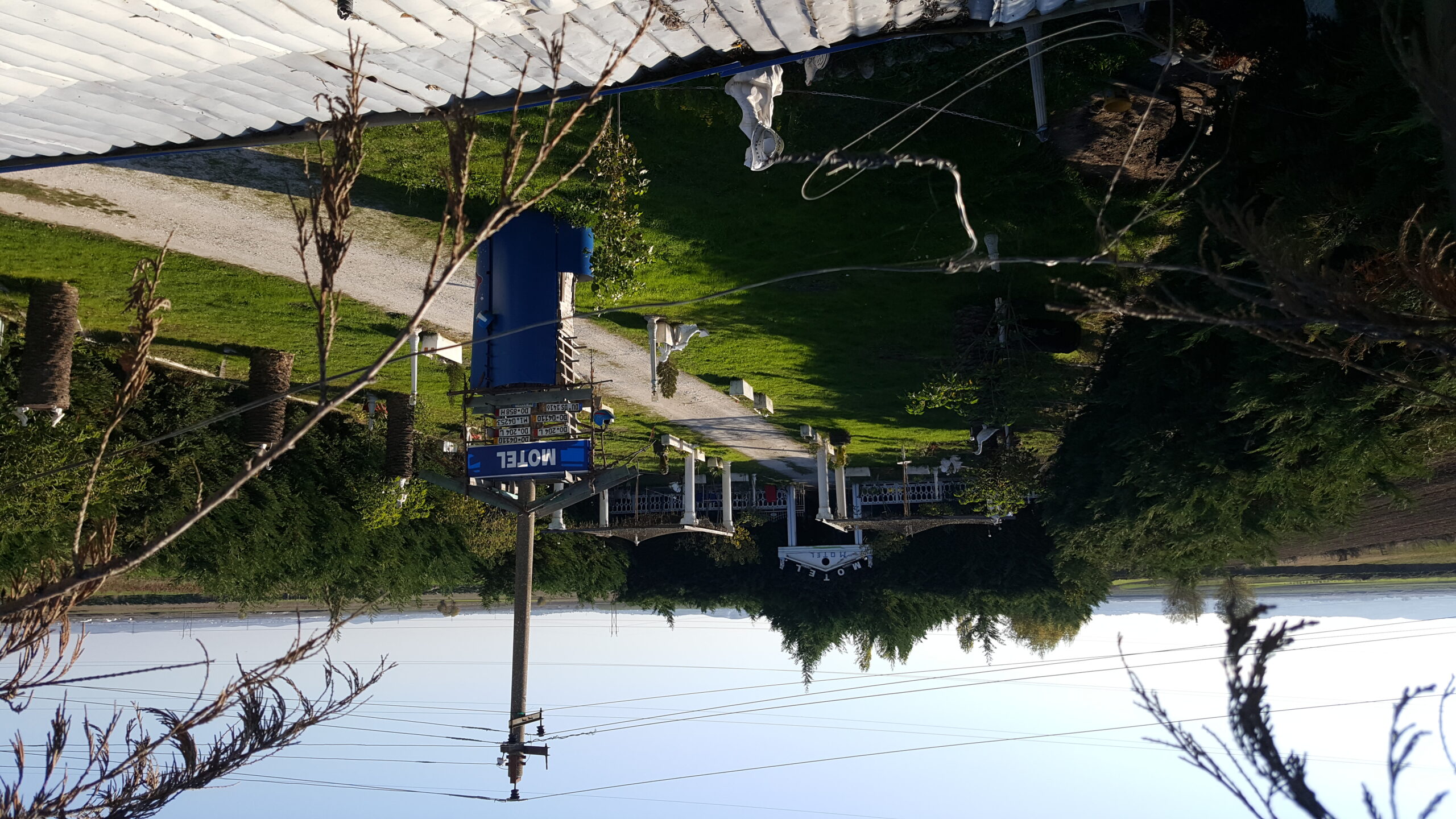
It wasn’t long before we realized a peculiarity of the country (I don’t think I’ve seen anything like that anywhere else), which is that there are many hotels directly integrated into gas stations. Not like this motel that is a little apart, but really in the same building.
We really regretted not having stayed in one of those gas station hotels. Seems like a typically Albanian experience.
Finally, another unique thing is the many plush toys that are just hanging all over the country. It’s a local superstition. This scary little guy on top of a truck we were following was the strangest one we saw!


